#i’m usually all for providing context but i might be a bit biased this time after i was at the game-
Explore tagged Tumblr posts
Text
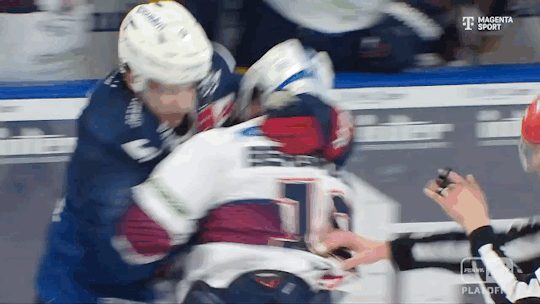
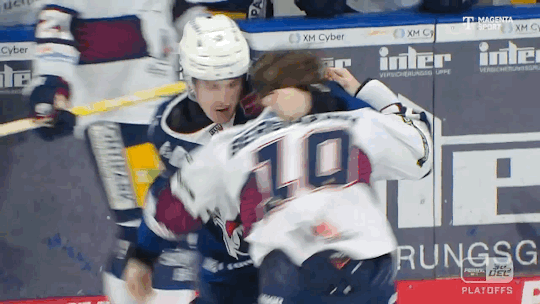
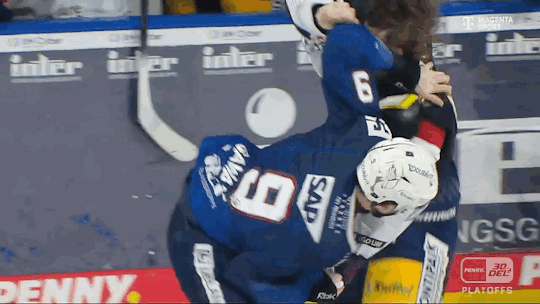

“Er hätte mal hinten was festmachen sollen, dann hätt’ ich ihn vielleicht auch besser gegriffen bekommen.” | Leon Gawanke’s first del fight, 20.03.2024
#i’m usually all for providing context but i might be a bit biased this time after i was at the game-#and my thoughts probably don’t belong in the tags then. accidentally had a great time at an adler game though. whoops.#leon gawanke#adler mannheim#del#quadratstadtvögel#gawanke lb
30 notes
·
View notes
Text
Meg
Before we start this excerpt, I think it’s best we provide some context. Based on the list of contacts in the back of the journal, “Meg” is probably Meghan Lockhart. She was a nurse during WW2, and that’s likely how she met my grandfather. You likely know her as the famous submarine pilot who went missing on a submarine journey in 1953.
The following is an entry from the journal of Dr. Daniel Garret. While he fails to provide any specific dates, do keep in mind that the journal itself was created in 1975.
Odd phone call today. Meg. She told me to bring my old Scarab costume and meet her by the docks at midnight. I tried to call her back, but all I could hear was static on the other end. I'm surprised I still have that costume laying around, to be honest, I thought I gave it back to Maxwell.
We’re breaking order slightly now. The following entry is sourced from an incomplete entry earlier in the journal. Square brackets are used for words we had to assume.
[Meg] was one of my few allies back when I was a caper, and I think the only one that I considered a friend (though I might be a bit biased since I met her during the war. I’m sure if I knew Magician from Mars or even the Puppeteer before I too[k] up [Capering], I’d be strong friends with them too). Of course, I didn’t call her “Meg” on the streets, I called her by her Caper name: Re[d Torpedo]. She was very useful in helping me lay low; most people hunting me expected me to be in the alleys or on roofs, and none of them could dream that I was inside of a bright red submarine.
We soon developed this great pattern where I’d meet up with her, get into the submarine, and we’d spend all night listening to radio signals for crimes to bust… and usually those sessions weren’t very fruitful. Instead of fighting crime, we just ended up talking most of the time. While I was rather [genuine with] my responses, I was never sure how serious Meg was. I remember distinctly how, one time, she asked me what my dream was. I, of course, said it was to [get my doctor]ate in Archaeology, and then I asked her the same question. She [smirked?], chuckled slightly, and said “I really want to find Atlan[tis] one of these days.”. This prompted a rather long argument between us. I kept pointing out how we have ships and submarines passing through every inch of the ocean, so it was unlikely that we could somehow miss an entire underwater city… and then she’d laugh and tell me I was thinking too much. Thankfully, we picked up some police transmission, and we ended up apprehending the Ma[d] [Hatte]r again.
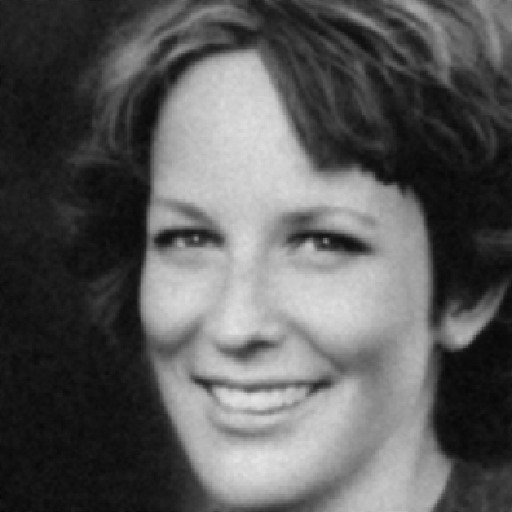
The description of her submarine as red strengthens the link between Red Torpedo and Meghan Lockhart. Meghan had spent a large portion of her childhood helping her father mend experimental military submarines, and eventually, she ended up working on a project to repair a scrapped model from WW1. This would end up being the red submarine in question, “The Megalodon”. In this submarine, she became the first female submariner to cross the Atlantic in 1948. Many fringe Caper Historians have speculated that she was the vigilante known as Red Torpedo, while others have floated the more likely explanation of it being part of a military cover-up… but I guess Meghan might be a correct answer.
The next entry was written directly after the entry where my grandfather received the phone call.
It felt so silly, standing outside, dressed like an outdated rendition of the Scarab. I was shocked I still fit in that thing, the chainmail must’ve been looser than I remembered. I sat by the dock for a while, occasionally looking over my shoulder to make sure there wasn’t anyone who wanted to bother me that night. I nearly turned back, feeling like a big great fool, when suddenly I heard the sounds of cascading water. It was Meg. She stepped out onto the docks, still in the same slightly goofy helmet and red jumpsuit. It was completely miraculous - I had long accepted that she died somehow, but here she was, in the flesh… and seemingly unchanged? In the quarter-century since I had last seen her, she did not display any sign of ageing, and her costume was as bright and intact as ever.
She walked up to me, and I couldn’t help but feel nostalgic. “Hello,” I said, unable to convey the great relief that washed over me.
She smiled, “Hope I didn’t take too long.”
We both laughed for a bit before standing in silence. It was just like the old days; no tragic deaths, just me and Meg by the sea. So. I asked her where she had been for over 25 years, and I don’t really know what to make of her response… but I will copy it down as accurately as I can manage.
According to her, she was idly wading through the ocean when, suddenly, her submarine got shot down. I wasn’t too surprised to hear that, it always seemed like a risk with driving your own private submarine around the sea with no notice to hostile nations and such, but when I said that, she said it wasn’t a hostile nation that shot her down. I asked what it was, and she just told me to be patient. She then went on to tell a story I might have called ludicrous decades ago, but now, having done all this research into Fantomah and the like, I have no choice but to accept it as equally possible, if not equally real.
She claimed she was saved by an underwater city. Not Atlantis, she was very insistent that this wasn’t Atlantis, but it was a vast underwater city named Merzonia. Once she was shot down, she was taken into the city and apparently met a group of people living there called Mermazons… not Mermaids or Mermen, Mermazons. And that’s where she’s been for all these years: living in this city, waiting and waiting for her submarine to be repaired enough for her to leave.
There was more to it… I really wish I had recorded it. My memory feels like a sieve lately, or at least annoyingly selective. Can’t remember when my daughter’s doing a recital, but I can remember the precise pages in the Miller Diary. Can’t find my keys, can find specific files on Fantomah without even thinking, or the Scarab costume that I hadn't thought about in decades.
After she explained all of this, she then told me she was leaving. I tried to get her to stay, but she said she had a duty to the Mermazons, to protect them in return for them protecting her. Besides, she had been presumed dead for a couple of decades, Magician from Mars was gone, Maxwell was now… well, I’ve gone over this already… the only one left was me. She wanted to say goodbye to me. We hugged. She got into her submarine and it took her into the sea and off into nowhere like some sort of mechanical Cheron. I hope Merzonia is real. I hope Meg was real. It all happened so fast that I'm still questioning it now.
Note: Further underwater exploration has shown no evidence for cities such as Atlantis or Mermazonia existing.
Update: Maxwell Miracle is currently contacting Miskatonic University. Hopefully, we can obtain some of the files they seem so intent on withholding.
2 notes
·
View notes
Note
Hello I want to ask you something about Mars Red (I don't mind about spoilers) tell me what happened with Maeda and Yamagami-san in chapter 13 and also, do you think the anime was good enough? Thanks.
Hi there! I’ll answer both of your questions under the cut, as this will be a long post.
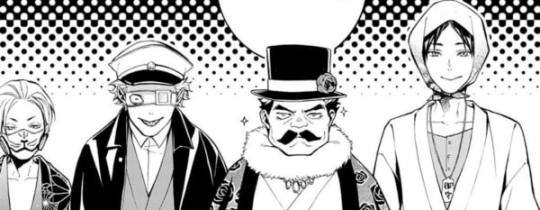
Do I think the anime was good enough? Well, I have mixed feelings about it, and I’ve been thinking of doing a full post of my thoughts after I’ve watched it all a second time now that it’s complete and easy to marathon. I enjoyed the anime immensely, but I’m not above critiquing things I like, either.
I started reading the Mars Red manga last year, and even now after the anime, I still prefer the manga’s version of events. I haven’t seen the stage play, the original source of material, so I can’t account for how accurately the manga or the anime adapted its events. As I understand it, the anime gained attention just for being an adaptation of a stage play, which doesn’t happen very often. Usually, it’s the other way around. That explains the interesting use of cinematography in the anime, the emphasis on drama and soliloquys and so forth. Some people might find the anime pretentious in that way, but, well, it is what it is, being adapted from theatre. Being an English Literature major, I didn’t mind it, and I also like the occasional artsy series.
Anyway, as a manga reader, I had different expectations going into the anime. The manga is more character-driven, whereas I feel the anime was more plot-driven, and the addition of anime-only characters – as interesting as they are – made the series seem crowded with only 12 episodes to pack everything in. The manga fleshes out the regular cast more (the anime didn't fully touch upon Defrott and Suwa’s pasts, left out Takeuchi’s shock over a revelation, erased parts of Maeda’s personality, left out some fun Code Zero moments, Aoi encountering Code Zero early on, etc.), and it definitely toned down the violence for a more mainstream audience because Shutaro’s manga rescue of Yamagami was far bloodier and terrifying, as Shutaro, agonizingly, begins to realize what he’s capable of and who he may become.
And one example that I still complain about (lol) is that in the manga, Shutaro and Aoi’s relationship is highlighted in the first chapter alone and emphasized in subsequent chapters. It’s clear they care for each other. It’s clear they’re among the main stage players. It’s easier to be emotionally invested in what happens to them by the end.
In the anime, Maeda takes centre stage instead, with the first episode introducing us to his fiancée, Misaki, whom he has never met in-person until she becomes a vampire. From that point onward, their what-if relationship and Maeda’s regret is frequently alluded to, culminating in the final episode.
Typically, whoever you introduce in the first chapter/episode are the characters that you’ll be going on a journey with, so it was a bit jarring for me when I realized Shutaro and Aoi and the rest of Code Zero wouldn’t be introduced until the second episode (well, Aoi did make an appearance, but they had her interact with Maeda more). We never get to see all of the flashbacks of Aoi and Shutaro, never are shown how much Aoi is determined to find Shutaro. We never even get to see Shutaro's “dream visit,” and then that silly vampire (sorry, Shutaro, I still love ya) left visible footprints in her yard after claiming he was a ghost, and she definitely noticed, so she knows something is up. Had if we had received all of that, perhaps the rescue and the finale would’ve been far more emotional for anime-only viewers invested in their relationship.
Instead, there was more feeling for Maeda and Misaki because the anime took care in telling their story. The anime was good in that aspect because they made Maeda and Misaki’s tragic relationship the focus, and so we were able to reach full circle by the end. Meanwhile, with Shutaro and Aoi practically being sidelined, I saw comments from anime-only viewers confused about why they were suddenly a main couple or getting the spotlight in the end. The anime could’ve avoided that confusion by tightening up their storytelling and fleshing out Aoi and Shutaro more as characters.
I also feel the anime focused a lot more on the politics and military, too. There were so many lengthy meeting scenes when it’s more balanced in the manga, I find. Also, just the other day, I was rereading some exchanges between Shutaro and Yamagami, and laughing, and thinking about why the anime didn’t include those because they were funny daily life scenes. There are also anime reviews complaining about the pacing, the random tone changes, and other things that might’ve compelled them to rate the anime higher.
So, do I think the anime is good? I might be biased, but I enjoyed it; it wasn’t a masterpiece, but it was good for what it intended to deliver. Also, I like series based in the Taisho era, so that was a bonus for me. The manga isn’t 100% perfect, either; it might disappoint Maeda fans, for one thing, and it does tell its story quickly (I wish it was longer). I personally prefer the manga over the anime, but I love both.
The way I view Mars Red anime and manga is like this: Fullmetal Alchemist (2003) and Fullmetal Alchemist: Brotherhood (2009) are both favourite series of mine. FMAB is prefered by most people, and is widely considered one of the greatest anime series ever, a modern masterpiece. It adapted the manga completely – only because the manga had finished by then, and I absolutely love the manga. However, it doesn’t mean FMA ’03 is bad in comparison; it just has a different but no less unique storyline that Arakawa also liked. With the manga still running at the time, FMA '03, being as popular as it was, had no choice but to go its own way for completion's sake.
This is the case for me here: I like the Mars Red anime and manga for different reasons. I’d probably recommend the manga first due to my preference for deeper character development. But the anime also tells an interesting version, though it could’ve done with a more streamlined focus. Karakara Kemuri adapted Fujisawa Bun-o’s stage play in her own way, presumably keeping to the general storyline but also adding personal touches of her own (you’ll know if you’ve read any of her works before); Signal M.D. studio handled the anime adaptation with their own team of writers while striving for the theatrical atmosphere of its roots. They accomplish different results.
And now that there’s a game with more information about the characters, the Mars Red universe seems so much bigger in an exciting way.
Now, to your second question:
MAGComi is a monthly manga magazine, and you can read chapters online for free for a limited time. They made chapter 13 available to read while the final chapter 14, newly released, is for premium subscribers. Chapter 12 is still available to view, as well.
Since I can’t read Japanese, I will be excitedly awaiting a translation from Laughing in Quarantine scanlations until I get my officially licensed volumes in English this year and next. Thus, I can only make guesses based on visuals alone while factoring in the anime’s events.
So, in the previous chapter 12, Code Zero encounter Nakajima, as they do in the anime, though the context differs slightly. It’s more menacing, and Maeda is revealed to be inside one of those vampire unit mechanical suits, already a vampire himself, near mindless. Yamagami is enraged. A fight ensues. Then, the Great Kanto Earthquake occurs, as it does in the anime.
In chapter 13, as you can see, the fight continues, dangerously close to shafts of sunlight; the rest seem trapped by the rubble, unable to get to the two in time. Yamagami sees Maeda shed a tear, and they exchange words, and Yamagami seems determined to save Maeda’s humanity. Yamagami then pushes himself and Maeda into the sunlight. They grin at each other, exchanging more words, as they are both swept up into flames, dying together.
Then more incredible stuff happens in the rest of the chapter, as you can see! We’ll have to wait for the scanlation team to provide us more solid answers.
7 notes
·
View notes
Text
Also its important to remember that canon has context too, and like....I refer back to canon as often as I do because IT is the context for fics and fanon.....but in the case of canon itself, the context is often the knowledge and perspective and even biases of the writer writing a piece of canon.
And that example from Batman and the Outsiders that @nightwingmyboi included for Dick’s conversation with Cass about his behavior towards her is a significant example of this because like......it has an extremely narrow context, with no sign in the narration there of any context OUTSIDE of what the writer is referencing.
What I mean by that is.....Dick actually was originally quite welcoming of Cass. He got along great with her, taught her all sorts of things, did his best to help her adjust.
The time when he wasn’t welcoming specifically, and seemed to take her adoption badly, is like.....directly about the time when Cass’ adoption first came up at all....in a story called Redemption Road.
Make no mistake, Dick very much acted like an ass to Cass there. Oh, even then not without reason, like, his behavior was characterized as him being suspicious due to the fact that Cass had recently been brainwashed into working for Deathstroke and killed again due to his control, and nowhere did Dick express that his issues were with Cass herself but rather that he was worried about taking it for granted that the brainwashing was gone and dealt with. With this particularly juxtaposed against the fact that Good Dad Bruce Wayne was very much on display throughout this story and Bruce was consistently characterized as being fully in Cass’ corner and showing none of his usual paranoia or concerns about something like whether they could trust someone who was recently brainwashed. Thus Dick kinda stepped into that role in the absence of Bruce assuming it as he normally would.
Now, personally, as much as I don’t LIKE how Dick acted towards Cass in that story, I’ve never considered it OOC....as I’ve always headcanoned it as being a bit of a prodigal son situation. In my mind, Dick was either consciously or unconsciously paralleling these circumstances with things like the time when he was brainwashed by the Church of Blood for a year....and he very much did NOT get a free pass on anything he did during that time (despite people promising they did understand it), with ‘decisions he’d made’ during that time frequently being brought up and thrown in his face afterward.
So my read of that story was always in light of that, and the fact that Bruce was very much removed from Dick’s life at that specific time and was a non-entity in helping Dick recover from all of that......and so I headcanoned that Dick’s attitude towards Cass was at least a little bit influenced by him being resentful of seeing her get the unconditional support and understanding from Bruce that Dick got none of in an EXTREMELY similar situation, and very much could have used at the time.
(Especially of relevance here IMO is the fact that Dick was very much in Limbo when it came to Bruce at that time, with the Church of Blood storyline happening when he was nineteen and thus no longer Bruce’s ward or legally bound to him in any way, estranged from him in every other way, and it would be years more until he was actually adopted....whereas in Redemption Road, Bruce’s actions were consistently geared towards getting Cass to accept that he didn’t blame her for what she’d done while brainwashed, that he did still very much want her to be part of his family, and here was his offer of adoption if she wanted it, as a result. Like....it was beat for beat EXACTLY what I imagined Dick wanted to happen in his own parallel circumstances back then, dreamed of happening, but very much DIDN’T happen...and here he was watching it happen with no acknowledgment whatsoever of when he experienced no similar drive from Bruce to show that he was understood, forgiven and wanted, at a time when he desperately wanted and needed all of that).
And thus Dick was acting and behaving towards Cass here in much the same manner as everyone had treated him when it was him in that position....with this not being hypocritical so much as him internalizing the idea that SOMEONE had to express this skepticism/judgment towards Cass here, in order for Dick to not raise long-dead and buried resentments of how all his friends and loved ones expressed that very same attitude towards him when it was him in this place. In order to be okay with that, he had to kinda internalize the idea that their behavior was valid and necessary and earned....which in turn made him internalize that it was valid and necessary and earned that someone express that behavior here and now.
BUT its not remotely in Dick’s nature to make excuses for his own behavior, or to cut himself slack....so its perfectly in character in my opinion for him to express the sentiments he’s expressing to Cass in that example. To focus SOLELY on his poor behavior and make the time when he wasn’t welcoming to her stand as if it was the entirety of their history together...when it wasn’t. At all. It was one small slice of their history, with a very specific context, that Dick certainly wasn’t about to bring up.....and that no one else brought up either, and thus it might as well not have existed.
So if I were writing that story, personally, I wouldn’t necessarily have done anything differently in characterizing Dick. I might have even had him say those exact same things to her about how he hadn’t been welcoming to her and had an issue with her adoption at that specific time.
BUT.....I would have contextualized this as being unreliable narration on his part, and used OTHERS, or even just him having other conversations elsewhere, to provide the context that I felt was necessary to explain WHY he’d acted the way he had, even without Dick himself offering that mindset up as an excuse.
Like, and there’s so many ways to contextualize that scene. You could have Cass herself push back against the idea that he was just wholly unwelcoming to her, and express that he had been really great at first and she’d really appreciated that, or even frame it as her expressing confusion as to WHY he’d acted that way towards her later, when he’d been so much more open with her before.
Or you could have Dick have conversations about that with others in his life, even in the form of making further self-recriminations against his behavior, like, getting down on himself for being such an ass to her there.....BUT using friends who knew him well to push back against the idea that this is just who he is rather than it being born of specific circumstances and his own issues....like maybe him talking about this with Roy or Kori and them raising the possibility “hey, I know this is a sore spot, but do you think that maybe the reason you reacted so badly to Cass there was because it brought up a lot of old stuff about that time you were brainwashed for a year?” Dick wouldn’t even have to agree with their assessment in the end, but it being raised as a possibility at ALL would at least allow readers to enter that context into their own interpretation of his actions and behavior and decide for themselves whether it played a role.
Or you could have Dick have a conversation with Bruce about it, with maybe even Bruce being the one to say, I’m a little surprised how harsh you were with Cass, as it doesn’t seem like you....and with this opening the door to Dick finally airing some long pent-up grievances in the form of him maybe only then just realizing himself that y’know what, it ISN’T like me, and now that I think about it its because it had nothing to do with Cass really, and it was more about me reacting off of how you were acting with her....and dealing/not dealing with the reality that it was exactly what I’d always wanted to see and hear from you back then, but you were nowhere to be found, and you certainly weren’t stepping in to protect me from people giving me crap for my brainwashed actions or expressing doubt about my trustworthiness/capabilities the way you were stepping into protect Cass from me expressing doubt about her trustworthiness, etc.
See what I mean? SO many possibilities there, all of which provide so much more meat and context to that particular story than Dick just being a douche to Cass because generic daddy issues or whatever.
But you gotta actually DRAW those connections in a story you’re writing, to go alongside the unreliable narration you’re having color Dick’s view of his own actions or behavior.....or else, those connections just flat out aren’t going to exist for most readers to be aware of or factor in to provide CONTEXT to Dick’s unreliable narration.
44 notes
·
View notes
Note
Sara I hope you dont mind me dropping this kind of ask, I just dont have anyone to talk abt this topic in particular and i have seen you open up about being neurodivergent multiple times.
All this time I believe that im neurotypical and always have to progress through life the way neurotypical people do, but from like 2 years ago i'm starting to question if i really am one bcs when I read about neurodivergency I slowly began to see myself in the description. How does one get um.. Diagnosed? I feel like theres sth abt myself that i havent figured out yet and I just want to know and love myself better.
Also forgive me for not being articulate enough, this is something im working out on.
Okay so I am obviously not a doctor or expert on neurodivergency, but I've gleaned a bit of knowledge from the nearly three decades I've spent being ND. So heres my advise.
First, I would begin with identifying why you'd like to seek an official diagnosis. Depending on what it is you're trying to diagnose, there are advantages and disadvantages.
Officially being diagnosed with ADHD gave me a sense of understanding I never had, gave a name to the symptoms that had been, quite honestly, ruining my life, and most importantly gave me access to the medication that completely turned my life around and made me a functioning human being. Even though I was diagnosed late in life (ie after school/developing years), I was still very lucky—my psychiatrist saw what the six previous ones I'd seen didn't. Before that, I was in treatment for depression and anxiety since age 11, had seen 13 therapists, and been on over 15 medications, to no avail. I'm lucky because a lot of obtaining a diagnosis for ADHD relies on self-reporting and reports from your parents—which is fucking stupid considering adhd is genetic, so my adhd parent probably isn't going to see my behavior as abnormal, IF they can even remember my behavior or payed attention to it. Despite those things, I was able to finally get diagnosed at age 22, and it changed my life. However, despite the fact that I suspected since I was a teenager that I might be on the autism spectrum (my brother, father, and several members of his family are), I made the conscious decision not to seek an official diagnosis. The medical community at large is incredibly ignorant and biased in regards to diagnosing autism in women, getting a diagnosis is ridiculously expensive, and unfortunately where I live an autism diagnosis can put you at significant disadvantage in the court system (it's often used as proof that an individual isn't mentally competent enough to do things like stand trial or be given sole custody of their own children, among other things). Plus, autism itself isn't treatable, so in my eyes I saw no benefit to getting a piece of paper telling me what I already knew. That's a personal choice that no one can judge another for—your reasons for seeking diagnosis are entirely valid whatever they are, and you owe an explanation to no one. I only wish to point out that not all diagnosis carry the same cost/benefit.
Getting a diagnosis can be a huge uphill battle, and it usually takes stamina and mental fortitude to get there. But everyone needs and deserves to have a community, a sense of understanding, and a support network, and wanting that alone is a more than valid reason to pursue a diagnosis.
So here's what I'd do. Get yourself in to see a psychiatrist (a therapist will do IF they have the training to diagnose, not all do), and do some research beforehand. Things as simple as googling "I think I might have/be (insert neurodivergent term here, for me this would be ADHD or autistic)" can give you some good starting points for what traits/symptoms are common. And as you're doing your research, take notes! If you see something jump out at you that you super relate to or that puts a feeling you've always had into words, write it down, copy the phrase, include things like how often you feel that way and what age you were when you began experiencing that. If there are ND behaviors that your immediate family share, that is very relevant, and actually gives a lot of context as to if something is a ND trait, trauma response, or shared personality quirk. Bring those notes with you to your appointment, reference them, and take notes of your own with the Dr's feedback. If you feel like you're being dismissed, tell them that, if you feel dissatisfied with their assessment, say so, and ask what your options are going forward. You probably won't walk away with a solid answer in just one day, but it's a good place to start.
It usually doesn't hurt to seek out community online, either, provided you take it all with a grain of salt—I've found that doctors tend to minimize symptoms, while peers online tend to maximize them. Ie, the way ND tiktok has become a slew of "do you breathe oxygen? Here's why that might be a sign you have adhd" type vids. Get second and third and fourth opinions before you take something to heart, you know?
And (even though this may go without saying), while I am no doctor, I have amassed more knowledge of my own disorders (as well as cptsd, ho lawdy its a fuckin doozy) than perhaps any one person should, so if you're at all in my vein or neurodivergency then please feel free to reach out to me directly, I'm always open to offering advise or a friendly ear or a sounding board for thoughts and ideas.
5 notes
·
View notes
Text
two in one day, I’m sorry mod but I’m living for these warriors debates
someone mentioned hollyleaf and PoT is literally the furthers I’ve read so it’s the freshest in my memory. potential spoilers for power of three ahead?
so, Hollyleaf is a young thunderclan warrior who is described as being a black shecat with green eyes. she is the biological daughter of leafpool and crowfeather, adopted by squirrelflight and Brambleclaw. her siblings are jayfeather and Lionblaze, 2/3 of the prophesized cats to have special powers. Holly was expected to be the third with these powers, but she didn’t have any speciality. her half brother was crowfeather’s son, breezepelt. adder something or other and sparkpelt can also be considered her adopted siblings as they’re the kits of squirrelflight and bramblestar.
for starters we’re going to dive into Holly’s personality a bit. she’s very stubborn and determined, extremely faithful to the code, and oftentimes comes off with a sense of self righteousness. she also tends to be rather naggy with brothers, but she means well and, despite being overprotective at times, has proven that she does have a bit of a fun side. lionblaze is usually better about bringing out her fun side.
I’m not gonna sugarcoat my opinion on her. she’s a shitty character. I liked her development up until she was made a warrior, and from there I literally just wanted to see her burn she’s such a shit fest in herself and it’s just, holly has me beyond words bro
but I can’t just say that without providing sufficient reasoning, so here we go again
the first notable holly, lion and jay shenanigan was when they thought they were big shit and went looking for fox. well, of course, they were dumb fuck and the trio ended up needing rescuing. there isn’t much to hate her for in this instance apart from not holding her ground. she originally thought it was a terrible idea, how fucking rational! but then I’m pretty sure she flipped up, got hyped, and was the one who almost got killed so. in all fairness, she was a lot, but this is also the equivalent of a toddler deciding it’s a good idea to post up to a bear so
next, was the whole Lion and Heather ordeal with the tunnels. granted, the situation wasn’t her fault, she did end up getting involved and when they almost drowned she wasn’t very helpful and was panicking like a dumbass most of the time. I think she did come up with the idea to use the river to escape, but then I think she also tried to invalidate her own plan by saying it was too risky. that’s fair, but at the same time y’all r finna die bro stop. so, she has a pretty blatant history of indecision in the w o r s t possible situations, and that’s frustrating to a reader.
next, the daylight gathering. there isn’t much to talk about here, but if I remember correctly she was chosen for a hunting trial and either cheated herself or helped someone else cheat?? I’m fairly positive it was her at least, but don’t quote me on that, this point might be invalid. either way, she did some dumb shit during the daylight gathering and it was annoying. but she did help lionpaw and breezepaw back to camp when they were buried alive so, props to her
and then there was the issue with wanting to be a medicine apprentice. not only did she spontaneously decide to flip ranks in the middle of her warrior training, she was a shit medic. she wasn’t able to retain any of the information she was fed, she was oftentimes snappy and rude towards cats who asked her about it and towards patients who were offering encouragement, and she used the rank as some sort of petty leverage over her brothers as if she were too good for them during the time she was training under Leafpool. and when she finally called quits, she gave a very half assed apology to her littermates and even went as far as threatening them (although playfully) to never bring it up again. I’m biased and don’t like her, so feel free to ignore me when I say wHAT a BITCH dude
and the infamous fire scene. of course poor, helpless holly offered absolutely NO assistance in rescuing them and almost didn’t even make it out because she was being a little woose about it. it’s just fire bro what’s it gonna do, burn you? tch. no, but fr I think she also said sum dumb shit like “we’re gonna die like this” & it made me mad because 1. no shit sherlock & 2. who asked. like they were literally trying to collectively save themselves with squirrelflight and she just goes into dramatic movie mode about it
and when she killed Ashfur?? only to tell all four clans the thing she tried to keep him from telling ONE clan???????? dumb 👏 ass 👏 HOE 👏 and like, why did you need to do that in a public environment, bring shame to Firestar, Leafpool, crowfeather, squirrelflight, Brambleclaw, Lionblaze, Jayfeather, Breezepelt, AND Nightcloud? plus you almost completely ruined Squirrel x Bramble u shitass bagelfuck.
and I think this goes beyond PoT so I don’t have the exact context, but I do know that Holly basically disappeared into the tunnels just because the going got tough and she literally put her whole family through all that grief for MOONS only to resurface when Dove & Ivy we’re in trouble as kits, and then again during a war only to get vibe checked by Hawkfrost and put them through that very same grief AGAIN. she was also unofficially mates with a ghost and that’s weird as hell so
anyways, this was definitely more biased than usual because I hate Holly with a passion, and I probably missed a few things or got a few things wrong, but that’s my two cents thank you and good night
26 notes
·
View notes
Note
I just saw your tags on the "harry was oppressed" post. Might elaborate on that when you are not tired? How Zayn was oppressed? His relationship to ot4. Other celebrities? I love your thoughts!
*cracks knuckles* buckle your seat belts folks we’re in for a wild ride here lmao.
also for context *here* is the post this anon is referring to
I think to start off i should just make a little disclaimer, everything i am going to discuss will be based in my biases probably seeing as I am also a brown British Pakistani person who is Muslim. Zayn has been someone that especially when i was younger I looked up to and was very essential in my journey of learning to love and accept myself and my culture tbh. It’s cheesy as hell but it’s true and i think this is important to know before I go into this more because like I said i am definitely biased towards him. Another thing is that I’m just going to be discussing my personal opinions and also my memory is not very good so i will probably miss out a lot of other things that happened/could be discussed. please dont take this as anything more than just. my opinion.
A thing that really opened my eyes to racism and especially the racism in the 1d fandom was the day that zayn left. I dont think thats what the post above was about btw and ill go into that but i kind of just want to talk about this. The day he left was. a severe mess. Not only because it was obviously upsetting but because of all the bs that people were spouting about a situation that absolutely no one had any context on. the statement that was released on facebook gave us nothing. literally just stated that zayn was leaving the band and the accusations and hatred people were directing towards zayn when we didnt know what actually fucking happened (and still dont might i add) was disgusting. people accusing him of being selfish and how they hated him and why he had to ruin everything. Accusing him of using mental illness as an excuse and lying about it and so much more. i had unfollow more than half of the people i followed that day. it really opened my eyes to the fact that these were all thoughts and opinions people had underneath it all and zayn was fine as long as he was part of 1d and giving people what they wanted. which was essentially being the token in the group and once he wasnt providing that anymore? people turned and people turned fast.
i think its also important to point out the flip side of it and that was zayn stans saying that 1d were nothing without 1d etc. i want to talk about why this was different from ot4 stans hating zayn. of course it wasnt nice to see or hear EVERYONE arguing with each other. i hated it so much. but i think what people failed to realise was that when it comes to situations like this you need to look deeper and think about all the nuances of the situation. zayn stans being happy about zayn leaving the band and saying 1d was going to die i did not agree with. anyone who knew me then and knows me now knows that i am a 1d stan regardless (preferably ot5 but i supported 1d until the end even as a 4some) BUT these opinions were rooted in his mistreatment in the band and the racism he was having to face as a result of being in the band etc etc i apologise for not being a person who can better describe and explain this situation but hopefully you are getting the picture. when fans were hating on zayn. with no context with nothing. that was based on racism. point blank. the amount of tweets FROM 1D FANS talking about how he was leaving to join isis and how upset fans were gonna be vulnerable and join etc etc all this deplorable bs. and he had to deal with comments like that throughout his whole time with one direction and i imagine even now.
Another thing id like to talk about is who zayn stans at least from my point of view usually were. For me i remember when i first got into the fandom i actively made the decision that i didnt want zayn to be my favourite because i didnt want to be a stereotype and this was a point in my life when i still tried to shun and push my culture down because i was ashamed of it. it was only as i slowly saw that zayn was considered as cool and hot and everyone else liked him that i kind of understood that maybe. being brown was alright and it was something cool and that maybe i was cool. it sounds fucked up and honestly i dont even know if i want to be admitting this so adamantly but argh if it helps someone understand then maybe its worth it. (mortifying ordeal of being known eh?) anyways i noticed as i engaged more in fandom and looked for more diversity, more fans like me, majority of non white fans were also... zayn stans. and honestly it makes sense because we all tended to flock towards the closest diversity we could find it seems. im not saying that there werent white zayn stans and that the other boys didnt have non white stans but i just wanted to point out this trend. so when you also take this into account and the fact that on the day zayn left it was majorly... white stans who were criticizing zayn it puts it in perspective for you. majority of fans who still like and support zayn are also not white.
there is a lot more to do with fans but hopefully thats enough of an insight and you can understand the kind of vibes that were present during 1ds prime and what not only zayn had to go through but also as a result the racism we ended up having to deal with as well tbh.
now!!!... something i dont really like talking about lol so this will probably be short but the other boys. so as far as i can remember liams always been kind to zayn since hes left (no surprise there <3 also please correct me if im wrong), niall was kind of indifferent/didnt say anything really, and then there was louis and harry *awkward smile*. hahaha. from my memory i remember when asked about what the most difficult thing was about zayn leaving harry said ‘the paperwork’ which was *awkward smile* and he also kicked that monkey mask/pinata? i cant remember with naughty boys face on it and honestly im sure theres more but his overall reaction to zayn leaving was kind of not caring and maybe being slightly nasty which :) with louis there was the massive twitter fight which literally tears my soul in half so lets not go into that haha and honestly other things where it maybe seemed like he was upset with zayn leaving as well. honestly i am a bit in two minds about these reactions because at the end of the day we dont know what occurred behind the scenes and we probably never will as much as we can speculate or whatever. not to mention that this 10th anniversary it seems maybe everyones on good terms which, who knows really im going to try be optimistic. i think whats important to note about heir reactions is that we dont know anything about their situations but the problem was really how fans reacted tbh (btw i forgot to mention earlier this is about basically everything except for harry and the nb thing. that is inexcusable). the boys reactions were understandable but the problem is that fans of course vicariously are influenced by the boy they stan so when one of them acted a certain way of course that ended up reflecting in fandom and resulted in more racism etc.
another thing with zayn was that there were many files leaked with like promo or whatever basically describing what kind of role the boys would take on/ their image etc. and of course all the other boys got things like bubbly/funny/charming etc and zayns descriptors? moody, mysterious, dark horse etc etc like from the inception of 1d zayn has been victim to racist stereotypes being pushed on him. and i think this is where harry comes in because of course the image pushed onto him was also extremely harmful and i definitely dont think we should not talk about that but often you'll see that... thats all that is talked about because people are uncomfortable admitting racism and talking about it.
When i mentioned other celebrities my point was basically just that while ive only talked about zayn in one direction this... is so present among any and every fandom. 5sos, Little Mix, Fifth Harmony... any fandom you can think of, i promise you it is there. racism in fandom is a real thing and a big problem and honestly this is why i always say representation is so important. and when i say that i mean everywhere!!! because if I didnt seek out non white fans to follow then maybe i would’ve had a completely different perspective on all of this.
The thing is also that a lot of this is just stuff that we’ve been able to get our hands on and also fan analysis and theories etc. there is probably so much more to talk bout or go into or stuff we’ll never even know about. I’ve kind of had to make peace with the fact that with celebrities you just really don’t actually know anything about them.
I think i’ll end this here if there’s any more questions you have about anything feel free to ask! and again this is all just my opinion but hopefully i’ve been able to help answer you <3 have a nice day and i hope youre hydrated!!!
#ask#anon#1d#zayn#long post#i also have links to posts for proof of how zayn was treated on the last day if youd like but i thought id simplify#and just talk about what i though#there really is so much more that can be said
4 notes
·
View notes
Text

((Hello guys, I have some hot fuckin’ tea, and it’s about Yamcha. Come join the tea party and take a sip, babes.
Alright, so for context, there was conversation on @dragon-ball-meta [sorry if you think it’s weird to be tagged in a random rp blog’s post I will delete it from the post if you want me to-] about the potential of a pairing between Android Eighteen and Yamcha, the majority agreeing that the pairing really didn’t make a lot of sense. No big deal, right?
Then comes one user, I will not name them because I don’t want to turn this into a witch hunt, who basically argued “IT DOESN’T WORK BECAUSE YAMCHA IS SEXIST TRASH”
And it. Really annoyed me, you know? Especially since there seems to be this trend of shitting on Yamcha for dumb or made up reasons.
And if you know me, you know that I can’t stand people shitting on him and Krillin.
Now, Dragon Ball Meta has done a good job in rebutting against their arguments, but I wish to make a response of my own, since this character assassination has been going on for years, and I think it’s time to stop.
Fuck your memes, the only valid Yamcha meme anymore is Yamcha juggling turtle shells.
Now before I start, I’d like to preface a few things.
First, no, I do not ship Eighteen and Yamcha. Not only because of the context that Dragon Ball Meta has pointed out, but because their general characters would really make the ship make no sense. Yamcha’s fear of girls would really not mesh well with Eighteen’s ‘spit it out’ kinda attitude. Not to mention, as much as I like Bulcha, Bulma is proof that bossy women just aren’t the best match for Yamcha. He’s too passive to make the relationship work. Yamcha is so afraid of getting dumped that he just nervously accepts that she’s right, and sometimes your partner needs to be told that they’re wrong. And while Eighteen is quieter, she’s kinda bossy too. So no, I don’t see this ship working, with or without Krillin.
Second, just so there’s no mistake, no, this is not me arguing against Dragon Ball Meta. I might elaborate, or even correct him on a few things on the subject, but in general, I agree with his assessment of Yamcha’s character. This is a response to one of the users that reblogged his post. Please do not think for a second I’m trying to start beef or anything.
Also, the person will not be name dropped because one, again, no witch hunt, and two, this is unfortunately an opinion of Yamcha that the majority of the fanbase seems to hold. So I will be arguing them all to fuck.
And if you find out who it is by going to DBM’s blog, do not, I repeat, do not harass them. If you do, I will block you. No exceptions! I don’t care if you’re following me, I don’t care if you like my writing and my characterization, I don’t even care if we’re mutuals. If you harass someone over works of fiction, you’re fucking dead to me.
Third, I know that being a Yamcha roleplayer might make me biased, but believe me, in order to write for this character, I had to do a fuck ton of research, especially since I’m actually relatively new to the series [I fuckin started binge watching it last year from Dragon Ball to Dragon Ball Super, still debating on watching GT], reading up on anything that I missed so that I can stay as true to his character as possible.
That being said, the research I’ve done on this series and this character is why I think the notion of Yamcha being sexist, a cheater, etc. is erroneous.
Now, Let’s begin.
You really don’t bring up a lot of points, your main ones being one, he sees girls as objects and not people, and two, he cheated on Bulma [ah that classic misconception among fans], So I will shoot them down one at a time.
One; You claim that Yamcha is sexist, that he sees girls as objects and things to be exploited.
... When?
No, I mean it, give me one fucking example. You made the claim, the burden of proof is on you, as the one making the argument. I’ll even provide links that let you view the mangas and animes for free so you can point me to one manga panel, one episode with the time that it happens. Give me one example, and I might, might, take that claim seriously.
You also say that he feels justified in his fear and distrust of women, so he’s sexist.
Uhm....? No??? You’re right that he’s afraid of women, but distrustful??? The fuck did that come from?
Oh, but you might zone in on the fear and be like, “That’s proof enough that he’s sexist!”
Uuuuuhhhhh no.
See, fear can mean different things depending on what it’s bred by. With things such as homophobia, transphobia, and, yes, sexism, those are fears bred by hate.
In Yamcha’s case, it’s clear that that’s not his case of fear. Not only does he express his want to get over his fear so he can talk to a girl without freezing up or being a blabbering mess, hence his motivation for trying to steal the Dragon Balls from Goku and the others, but the other characters’ outright point out that he’s shy. On numerous occasions. Usually by Bulma, but still.
Not to mention that usually his reactions to being around a girl or being flirted with by one, it’s usually very anxious, leaving me to believe that he’s got some sort of social anxiety going on.
If you need proof, look no further than episode six of Dragon Ball “Keep an Eye on the Dragon Balls”, where it shows various instances of Yamcha going into panic attacks over Bulma, even going into an outright catatonic state when he realizes he accidentally grabbed Bulma’s boob. [which also discredits the notion of Yamcha seeing girls like objects, as he’s constantly horrified of seeing and touching a naked girl. If he saw girls as objects, he would have been creeping on her all to hell.]
The only reason he got over his fear with Bulma is because her safety was in jeopardy, and he had to put his fear aside to protect her. Once again, this discredits the idea of him seeing women as beneath him, as well as your other point, which I will get to in a while.
“But why is he only like that with girls?” you might ask. Well, not only is there several real life examples of boys being too shy around girls and feeling more at home with talking to boys, Yamcha has expressed wanting to get married one day. And as someone with social anxiety myself, I do find it very hard to approach people IRL because I’m afraid of being judged, if it makes sense. So it’s very easy to argue that the same could apply to Yamcha, just with girls his age.
Two; Your argument is that he cheated on Bulma and that in general, any ship with him would be abusive.
Uhm??? The only source for the cheating issue was Trunks, who got it from his mother... Who’s known to misunderstand situations Yamcha finds himself in as him cheating. Who’s known to get jealous if a girl shows interest in him, not him showing interest in the girl, but the girl showing interest in him.
Not to mention, does this look like someone that’s willing to cheat?
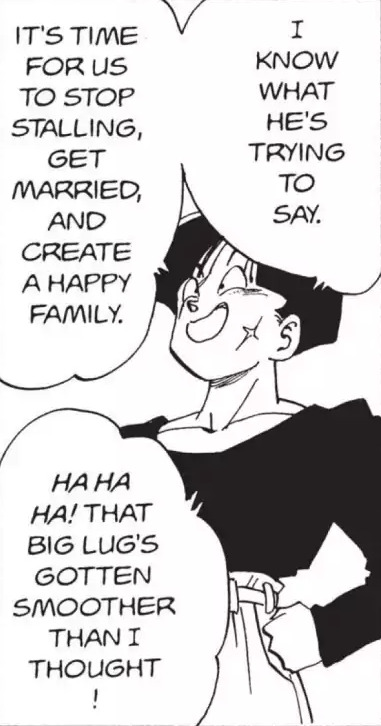
Because to me this looks more like someone that takes his relationship with Bulma seriously and wants to take it further. And remember, the only prompting was Goku telling Bulma to “take care of the baby” with no context.
Oh, also here’s the link to the manga page so you know I’m not bullshitting.
Oh, what’s that? You’re going to bring up the episode in Dragon Ball Z where it shows him as a baseball player? Where not only were they broken up at the time when he asked someone to go on a date with him and was talking with another girl, but the entire episode was also filler? Once again, think back to his shyness. Even Toriyama confirmed that it’s always going to be there.
“Oh but then you’ll have to say all the fun stuff like Chichi making Goku learn to drive and Yamcha, Tien, and Chiaotzu kicking the Ginyu Force’s ass.” you may say.
I mean. Yeah. It’s not canon. But unless it’s deconfirmed by Toriyama himself or doesn’t contradict established characterization, then we can still imagine that they happened. Most of the filler are things happening during timeskips anyways, or just don’t happen during the main story, so it’s really up to the imagination what all happened, and Toei did just that.
You also claim that Yamcha behaves like a fuckboi, to which I have to say bitch where?
Yeah, he was a bit annoyed that Bulma had Vegeta’s child, but that was never, I repeat, never directed at Bulma, or Trunks for that matter. In fact, by the looks of it, he was helping Bulma take care of him. It’s quite clearly directed at Vegeta.
Why?
Simply put, Yamcha’s ultimate goal was to settle down and start a family. And not only does Vegeta do that, with his ex no less, but he also just... Completely ignores them.
Can you imagine how infuriating that is, not even flaunting something they have that you don’t, but completely ignoring it like it’s nothing.
Vegeta had started this family, the family that could have been Yamcha’s, and he wasn’t even willing to take responsibility for it.
Now I’m not trying to imply that Yamcha was owed anything or that Bulma owed anyone anything. Hell, I don’t think Yamcha thought that either. I’m just trying to illustrate his mindset.
And you know what? After the Cell Games Saga, he stopped being cross with Vegeta. He’s still friendly with Bulma and Trunks, and he’s even friendly with Vegeta. Hell, when Bulla was born, he was excited to meet her.
Pretty sure if he were a fuckboy, he’d be trying to win Bulma back.
But no, he’s content with being friends with Bulma and her family. Because, at least I think, he cares about what she wants and what makes her happy. I think so long as she’s happy with what she has, then he’s happy too.
Does that sound like a fuckboy to you?
“Well then why did they break up? Are you saying Bulma did something wrong?”
No.
Just like in real life, sometimes break ups don’t happen because one slighted the other.
Sometimes things just don’t work out.
Think about it, throughout the series, up until the Android Arc, their relationship has been on and off, usually Bulma accusing him of cheating. And like I pointed out earlier in the post, Yamcha is just too passive to make the relationship work. If he were more assertive and willing to stand his ground and assure her that no, he’s not cheating, then maybe it would have had a better chance of working.
I think at this point, the healthiest thing for them was that they stopped being in this relationship. For good.
And if their break up was really the result of one of them wronging each other, they would not still be friends.
So, can we end this character assassination? It’s been going on for yeas, and it needs to stop. Same with Krillin’s character assassination.
The memes may have been funny once upon a time, but they’re getting old now. And people are starting to view them as canon.
And that’s it for my tea. If you have something you wish to add or to correct me on, please be sure to share your thoughts. I’d love to know. ^^
Sorry that this is so long and probably all over the place holy fuck-))
9 notes
·
View notes
Note
Any tips or things to keep in mind while writing a original mecha story? What about for original mecha stories aimed at a female audience? (Like ones that are more character focused, but have some Real Robot elements like TLGG, Gunbuster, Eva or Macross)
Hi Anon! Thank you for the Ask!
I’m more of an analytical and academic writer, but hopefully I can be of help anyway.
General Tips
1. If you haven’t already, ask yourself these questions:
What kind of mecha story? For myself (and I think this is true of a lot of mecha fans), “mecha is a genre”—but—it’s not a genre that happens in a vacuum. Both Real Robot and Super Robot can take place in hard science fiction settings as well as fantasy settings with magic.
What kind of writing? Short story, long form novel, novel series (light and long form), poetry, experimental formats, sequential illustration formats (e.g. comics, manga), plays, television/film/animation, etc.
Have you read a mecha story that was not in sequential illustration format?
And now I really want to read/listen to a mecha story in Middle English with iambic pentameter. It could have a name like: “Overwalken Searshaft: Caunterbury Legendes.”
(yes English nerds, that title is some sloppy Anglish smooshed with Middle English but you get the idea)
2. Most people are introduced to mecha via anime, manga, or film; and so are likely to not have read mecha stories in a non-visual format. When a show is scripted, there is a lot of writing that goes into describing scenes that we don’t think about because we’re seeing/hearing the visual and audial representation of that writing.
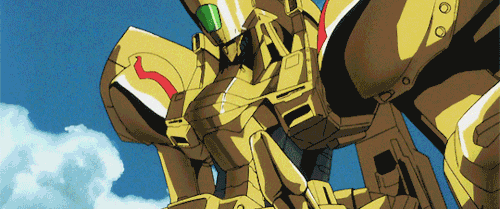
If a picture is worth a thousand words, how many words is a single frame worth? Without any context, what do you think is happening in the gif above? How would you describe this less than 3 seconds of action if you were writing it?
I recommend that you read a few novels or short stories that involve mecha or giant robots of one kind or another. They might not be the type of story you’re planning on writing, but they should help with deciding on how much detail you want to go into when writing scenes with mecha (action or otherwise).
Here’s a few to try:
The Pacific Rim film novelization by Alexander Irvine.
The Del-Ray Robotech novels by Jack McKinney. Skip the ones that are about events in the Robotech cartoon—they are all good—but I recommend reading the ones that are fully original, (books #13-17).
“The Relic” by Jonathan Green is a short story within the “Legends of the Space Marines” series from Warhammer 40K. In Warhammer 40k, a “Space Marine Dreadnought” is a powerful Real Robot mecha. One doesn’t need to know the entire mythos of Warhammer 40k to understand the story.
“Mobile Suit Gundam: Awakening, Escalation, Confrontation” by Yoshiyuki Tomino. This book is the English translation and compilation of the three light novels that Tomino wrote. It covers the MS Gundam 0079 story, but with added detail (more about New Types, politics of the Zabi family, etc), and is much darker than the anime.
All of the above are Real Robot mecha under different levels of “science-fiction hardness" and settings. I cannot think of any novels or short stories that are about Super Robots, but they probably exist.
Two Specific Things
1. World-building will need lore and rules for the mecha. Even hand-wavey science-fiction or fantasy-with-magic settings have rules about who can pilot a mecha, how it’s done, what materials the mecha is constructed from, its power source, how it moves, how the pilot(s) perceive the world around them while piloting the mecha, its weapon and defense capabilities, etc. The harder the science-fiction, the more constraints are imposed, and will likely require real world research to help describe it.
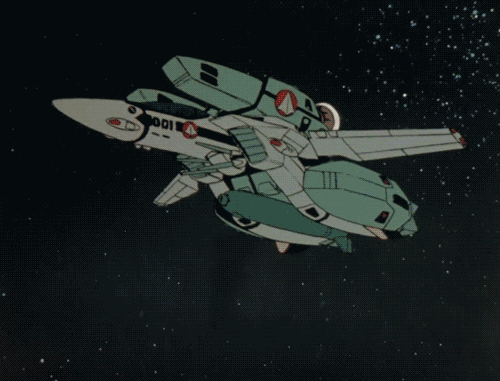
For example: Gravity is a Thing. Some Super Robots can fly in such a way that they can easily leave Earth’s atmosphere at or above escape velocity and do battle in multiple types of different gravity environments (e.g. Godmars vs Getter Robo). It’s hand-waved and not really thought about. This happens in Real Robot too, but there are many Real Robot stories that use gravity limitations, while hand-waving other things (not all giant robots can fly).
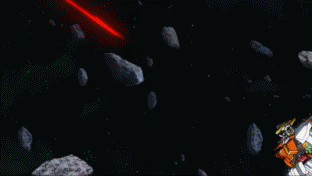
As shown above—in Gundam 00—the Gundams can do battle in space and LOE (zero gravity and Low Earth Orbit), and also in mid-air (atmosphere) and on the ground. That’s the hand-wavy part, because if we think through the physics of this, a machine optimized for aerial combat at Earth gravity (1G) is probably not going to be optimized for combat in LOE, in space, or in gravity conditions that are less than Earth’s (e.g. the Moon, Mars, etc). The Gundams can fight in all these conditions, but one of their constraints is that they cannot accelerate to escape velocity or shield themselves from high temperature friction during re-entry (atmospheric re-entry is a constraint used throughout the franchise). In Gundam 00, the Gundams have to be transported between surface to space via the space elevators.

Above: One of the things that is a “game changer” for these Gundams within that setting, is that Dynames can use the Super Substratospheric Altitude Gun, capable of hitting an orbital target from a stationery position on Earth’s surface. Use of this weapon comes with additional constraints (power, connection to a network for calculations, etc).
Super Robots can also have constraints. Both the Evas in Evangelion, and the combined form of Dairugger/Vehicle Voltron have a timed operational power limit. Evangelion has a lot of Real Robot elements, so as far as Super Robots go, they’re not very powerful. The more powerful the Super Robot, the harder it is to define a constraint. This is typically where a story hits the “His power level is over 9000!” problem, or “unleashing the full power will destroy the robot, or kill the pilot.”
Which brings us to Specific Thing #2: Why mecha? What problems do the mecha solve for the protagonist? Especially if a story with a lot of character focus is what you’re going for. How much focus do you want to put on the mecha? The answers to those questions are going to help with the lore and rules for the mecha.
Aiming for a Female Audience
I’m probably the worst female-ish person to advise on this because I rarely identify with female characters, especially as a tomboy in the 80s (of course, most of them weren’t written very well to begin with back then). I identify as gender fluid, but the gender binary that I grew up with still shapes my life. My tastes in fiction are all over the place and are probably not representative of a “female audience.”
But I do know that there were a lot of women who liked Gundam from the start. (ʘ‿ʘ✿)
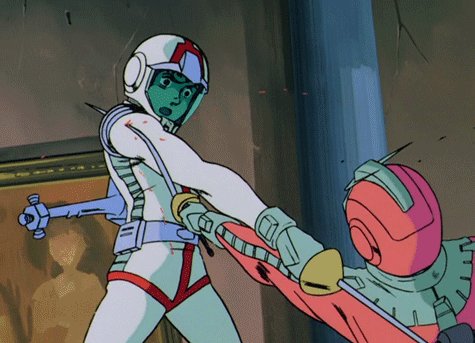
Above: Amuro and Char fight with fencing foils in mid-air.
Any audience can be widely diverse, and not everyone within a demographic (broad or narrow) is going to agree on what they want to see, but it’s safe to assume that a sizable part of a female audience that would be interested in a mecha story is probably going to be Done™ with something that is commonly found in either mecha stories or mainstream science-fiction and fantasy. As to what that specifically is, that can differ quite a bit.
For me, I’m Done™ with “Tits And Camel Toe Out For Mecha” in stories with teen characters that are really just ecchi content with a veneer of a serious story slapped on top with a Gainax Ending.
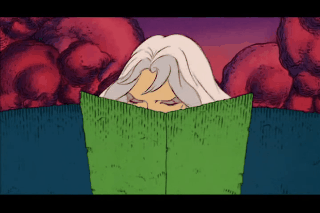
I’m saying that as someone who loves Go Nagai and Satoshi “Plastic Nipple” Urushihara, and thinks that the Heavy Metal movie (gif above) is a work of art, which probably makes me a hypocrite, but hey, I have standards for my T&A.
I recommend looking at stories that are known to be popular with women, and then look at stories that are known to be popular to specific demographics of women (intersectional identities). They may not be mecha stories, but if they are in the current zeitgeist, then there is something about the narrative, characters, format, etc that might be common between these stories and quantifiable in a way that can help you aim for a female audience. It might be hard to find out what these are beyond a broad female audience, so research will be necessary.
There are much better sources for advice on this than me, so if audience appeal is something that you want to dive into, then you’ve got your work cut out for you.
Character Focused (a grain of salt)
In my biased and totally not expert opinion: the smaller the main cast, the easier it is to have a character focused story (unless you meant “character driven plot”?), and the mecha itself usually gets a lot of attention as that’s more or less the point of the genre.
However, a larger main cast provides more varied opportunities for focusing on character interactions, and more material for plot hooks to support multiple plots that can be structured/threaded in a variety of ways. TV Tropes (not my favorite source, but it’s good enough for this) has a rabbit hole of entries about different types of concurrent plots: Soap Wheel; A-B-C-Plot; Two Lines, No Waiting; Four Lines, All Waiting; etc. These entries are useful for getting outside of one’s head and considering options for how-and-when to introduce and wrap up plots. If character focus is what you want to prioritize, then start with “Soap Wheel,” as soap opera plots are all about character focus and they are a good example of staggering plots in a way that keeps the story going for 20 years or more.
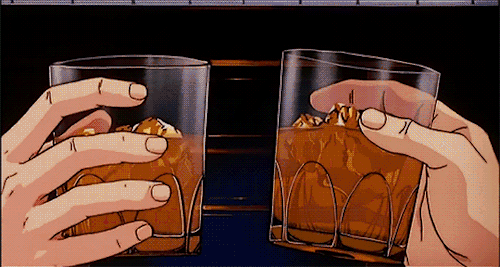
Above: Wolfgang Mittermeyer and Oskar von Reuenthal from Legend of the Galactic Heroes enjoy a drink while scheming. LotGH makes the most of its hundreds of characters with scenes like this. It’s character focus of a different kind. Like Gundam, LotGH has a lot of female fans, but it’s not a show that one would immediately think of that would appeal to a female audience.
Returning to this thing about “character-driven plots”, that’s a concept that I’ve found to be generalized and abstracted to the point where it doesn’t mean anything anymore. A plot-driven story can have a lot of character focus, and most mecha stories are inherently plot-driven (b/c genre), as the mecha is the vehicle for the protagonist to get from Event A to Event B. Mystery and romance genres are an example of plot-driven stories, and in both (but especially romance), there can be a lot of character focus to the point where B and C plots could be “character-driven” if they are about the specific character’s internal change, conflict, growth, some essential part of themselves that demands action, etc.
A mecha story can be structured with a plot-driven long-running A Plot which requires the mecha (so not monster of the week as those are episodic and not long-running), and certain main characters are focused on in such a way that their own internal struggles, conflict, and growth drive B and C plots. It’s up to you if those plots are concurrent, cyclical, or rotate in-and-out of focus.
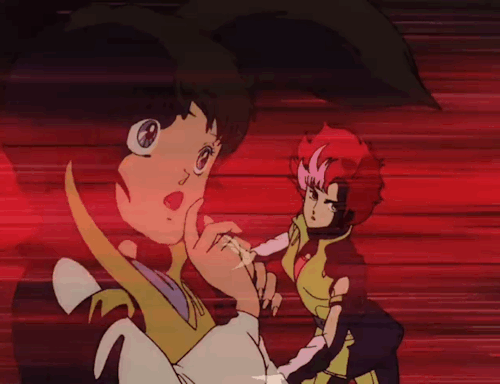
For example: Aoki Ryūsei SPT Layzner (shown in the gif above) is a Real Robot anime has two sequential long-running A Plots that are plot-driven and focused on the mecha and its pilot (the protagonist). The first A Plot drives the first half of the series, and the second A Plot drives the second half of the series (which was sadly cut short so technically it wasn’t the full second half). There is a time-skip between the A Plots. The protagonist, Eiji, has an internal struggle that is threaded throughout, the focus on him creates the “character-driven” B Plot (who he is, the mystery behind the strange things that happen to him as he pilots the prototype, his conflicting loyalties between both halves of his heritage, how he reconciles his extreme pacifism with being forced to fight and possibly kill, etc). The small main/supporting cast is used effectively as each supporting character interacts with Eiji in such a way that they are integrated into the B Plot for his growth and resolving his internal conflict. The other main/supporting characters have their own struggles and character growth as well, but not quite enough to constitute a “character-driven” plot. The story’s minor C Plot is external and puts pressure upon the A Plot.
For what it’s worth: A truly “character-driven” plot—or story that is fully character focused—is going to yield a story like Franz Kafka’s “Metamorphosis,” which would be interesting to explore within the mecha genre, but I have a feeling that you’re probably not interested in that much internalized character struggle.
Finally Anon, thanks to your Ask, I’ll have to add “Write a Canterbury Tales parody mecha story in Middle English” to my bucket list. I don’t know why my brain went there but it did. Please enjoy one of the best videos I ever found on YouTube:
youtube
(yes English nerds, the guy in the opening says “Old English” when it’s not OE, it’s ME)
36 notes
·
View notes
Text
The Layperson’s Guide to Online Research
The Internet is full of badly researched and sometimes straight-up wrong information. Who would’ve guessed? From reinterpretations of ancient sources being taken at face value by history enthusiasts (like that infamous pre-patriarchal Persephone post) to well-intentioned but ahistorical writing spreading misinformation among modern polytheists (like the myth of Hestia abdicating in favour of Dionysos), it’s often hard to know what is trustworthy information and what is not. Unfortunately, this makes things difficult when you, a non-academic, want to research a topic.
My biggest recommendation will always be to turn to a local university library (often there are even lectures and conferences you can attend without being a student) or to subscribe to a digital library like JStor. On the other hand, I completely understand that for various reasons, not everyone can access these resources. This is why I’m here to help.
In this post, I will outline the steps you should take to check whether an online source is trustworthy and up-to-date. I will mainly focus on researching ancient history, but bear in mind that you can use the same (or similar) steps to research many different topics.
The vetting process below may seem like a lot to take in, but it all boils down to five questions:
where does this come from?
who is the author?
what are their sources?
when did they write this?
who else wrote about this?
Step One: Where does this come from?
The first thing you need to do is check the website where the information comes from. Trustworthy signs to look for are a .edu or .org web address, a university logo, or the description of the website as a professional resource. Very, very often, websites with flashy or sparkly designs are made by amateurs and are not trustworthy. Any web page that doesn’t tell you who wrote it or why is not trustworthy.
When you’re looking at books and articles uploaded online (such as Google Books), make sure they were published professionally by a publishing house or peer-reviewed journal. Mainstream news articles range from accurate (BBC) to completely unreliable (Daily Mail), but since even the best of them can be sensationalistic, I recommend digging further.
Another very important thing to look out for is ideology. Is the website devoted to a certain issue, like proving the Ancient Greeks were black, the Sumerians were contacted by aliens, or the Hittites worshipped a pre-patriarchal Mother Goddess? Congratulations, this information is biased. Some of it may be correct, but you should check steps two to five very carefully before believing it.
Generally, you should look for websites that are focused on your topic, not websites that use your topic to prove a point.
Here are two examples to illustrate the difference:
Not trustworthy: this page about Persephone as an archetype. The website focuses on the Enneagram, not on Greek mythology, and the web design is amateurish. Even though the page mentions mythology, its purpose is to establish Persephone’s personality type, not to discuss her role as a deity in Ancient Greece.
Trustworthy: this page about Ancient Egyptian women and religion. The website looks far more professional, and by clicking on the logo in the top left, you will get to the organisation’s page, The Stoa Consortium. On the right, there is an “About” section which explains that the website was set up by a Professor of Classics and is funded by various universities, as well as by the US Department of Education.
However, determining whether or not a website is any good is not always so easy. Theoi.com, for example, is an independent resource with no academic support, but it’s very well put together and reliable. Meanwhile, Academia.edu is a platform for scholars, but less reputable people can easily slip through and post their “translations” of haiku in Linear A. Experts can have informal blogs, and non-experts can write professional-looking news articles. It’s hard to know which ones of them to trust.
This is where Step Two comes in handy.
Step Two: Who is the author?
A trustworthy source will always identify its author. Some pages (like my own blog’s “About” section) will only tell you the person’s credentials, often for privacy reasons. This is a good start, but you should try to find out more - particularly whether this person actually is what they claim to be. (In my case, it’s fairly easy to tell, since I’ve posted pictures from university projects (x, x) and my identity can be deduced from various links and tidbits I’ve shared - but please be skeptical about what I say as well! Just because I’m an ancient civilisations student doesn’t mean I’m always right!)
Once you know who the author is, you need to check whether they are not only educated, but educated in the subject. This means a university degree (preferably a masters, and even more preferably a PhD) or other proof of expertise in the subject (like an experienced weaver sharing their perspective on ancient tapestries). Whatever the person’s qualifications, they need to be serious (i.e. not “one time in college I took a class on Greek mythology”) and directly related to the subject.
Here are some examples:
Not trustworthy: that pre-patriarchal Persephone post. Its author is a layperson who fell into the same trap I’m trying to prevent: they read a few web pages and decided they were the truth. Luckily, they seem to have somewhat learnt from their mistake.
Usually trustworthy, but not in this case: Gerda Lerner writing about the Hittites. While Gerda Lerner was very learned in women’s studies, she was not a Hittitologist - nor particularly familiar with ancient civilisations in general - and she did not have the nuanced understanding necessary to discuss women in the context of Hittite society.
Trustworthy and non-academic: Janet Stephens’ hairstyle reconstructions. Janet Stephens is not an archeologist, but she is a very experienced hairdresser. This makes her qualified to reconstruct and reproduce ancient hairstyles. (Note that this does NOT make her qualified to discuss, say, the religious implications of hair-binding in Ancient Greece. It makes her qualified to do what she does: style hair.)
Trustworthy and academic: Paul Schubert’s blog (in French) about Ancient Greece in the modern world. His “About” page has a link to his university page, which contains his biography and credentials. He writes about his expert subject, and stays well within its boundaries.
Step Three: What are their sources?
Next, you need to determine where they get their information from. For ancient history, the number one, most important source is ancient texts. Anything that cites ancient texts with their reference (Homer, Iliad, XΧII 389-390) is automatically more trustworthy than anything that doesn’t. If you want to research in-depth, I would recommend looking up these references to get an idea of what they say (Theoi.com and Perseus both have free text databases).
References to modern texts (especially books and articles) are good, but the author shouldn’t only cite these. This turns research into a game of broken telephone - so-and-so told me that so-and-so said that Plato wrote... What’s more, you need to make sure these sources are also trustworthy. Just because a page provide links doesn’t mean they’re relevant or well-researched - if so, then rickrolling would be the peak of academia.
Lastly, I shouldn’t need to say this, but information without sources is not information. That’s like me telling you I’m secretly the princess of Liechtenstein. It might be true, but you can’t know for sure without proof.
Again, some examples:
Not trustworthy: this quote by Plato and this one supposedly from a cuneiform tablet. Neither has a clear reference, nor context: the first is just attributed to Plato’s Symposium, and the second’s author varies from Naram-Sin to a Chaldean king to Cicero. (What’s more, both have strongly ahistorical content. Plato would never have written about “Greek mythology”, and the Mesopotamians had no concept of a “book”.)
Could be trustworthy, but you should check: Medievalpoc’s sources on Ancient Egyptian transatlantic voyages. Yes, a variety of links are provided, but are they any good? A few clicks will show that they lead to the Daily Mail, a paper written by two ideologically-motivated Mormons, and a bunch of articles about ancient people building boats (which nobody doubts, but which doesn’t prove they could sail across the Atlantic).
Trustworthy: Hittite Prayers to the Sun-God by Daniel Schwemer. This is a fully cited article with ancient sources.
Step Four: When did they write this?
The next important step is to find out when this information was written. This is because research is constantly evolving, and older interpretations may no longer be considered valid. This obviously includes views with underlying racism, sexism and homophobia, but it also applies to less obvious things, like the fact that the Sumerian word zag is now read za₃.
Unfortunately, for copyright reasons, most information available online for free is a bit outdated. You should still aim for more recent publications if you can, and definitely avoid anything that’s fifty years old or more. The only exception is for translations of ancient texts, which stay pretty much the same apart from a few spots where their translators’ biases come through - and the exception to the exception is texts in Mesopotamian languages, in which case you should really, really try to find a translation that’s younger than fifty years.
Academic podcasts, blogs and newsletters come in very handy here, because they offer insights on modern research while often being written in accessible language.
Yet more examples:
Not trustworthy: Martin Nilsson’s The Mycenaean Origin of Greek Mythology (1932). Though Martin Nilsson was a great scholar, modern research has evolved since this book was published (in 1932 in Germany - a context you can definitely sense while reading). What’s more, it was written before Mycenaean Greek was even deciphered.
Trustworthy: Eric Cline’s 1177 B.C.: The Year Civilization Collapsed (2015). Not only is the writing easily accessible to non-experts, this book is up-to-date and written by someone at the forefront of research in Late Bronze Age societies.
Step Five: Who else wrote about this?
This last step is basically fact-checking. Your author may have the best of credentials, they may have written their article on the most respectable of websites, but their theory could still be rejected by the majority of their peers. Look up the book or article’s title followed by “review”, which will hopefully generate other experts’ opinions on the matter - or just keep browsing different websites.
This step is not the most important and can often be skipped - you don’t need to fact-check every word you read. But if you want to research something in-depth, if a claim seems iffy, or if any of the above steps gave mixed results, you should always look for outside input. And no, you won’t always get definite answers on whether something is true. Such is our knowledge about history. But it will give you a more rounded understanding of the topic, and that’s always valuable.
A final note
If you’re not sure whether something is trustworthy, please don’t hesitate to ask! Historians and history students are your friends, and we want you to have accurate information. There’s a lot of us on Tumblr and elsewhere who are happy to help out with that. We can’t be there for everyone 24/7, but we’ll gladly point you in the direction you need!
2K notes
·
View notes
Text
What is a story?
Tiernan's @tiernanogphoto wonderful contemplation (found here: http://letstalkphotography.tumblr.com/post/171568318505/on-the-intersection-of-art-journalism-and) on "stories", "photo-journalism", "objectivity", and his thought-provoking question whether all kinds of photography can (or maybe even should) evoke stories (which will certainly be a topic for one of the next inConversations), made me think.
I certainly cannot add anything of value to Tiernan's "sociologist approach", because my background is largely different. I studied literature, drama, (and social-psychology), later went to filmschool, and have been working as a producer, writer, director, video-editor, and cameraman. So, what I write here, is a very different take on the subject, and rather the viewpoint of a "storyteller" and that one of a person, who has been engaged in trying to understand and to work with the "mechanics" of storytelling.
What is a story?
A story certainly is some sort of narrative. It can be based on actual events (to whichever extent), or it can be completely fictitious. The goal of a story is to interest, inform, amuse, emotionally engage, or also instruct an audience. And that unrelated to whether the story is "true" or not. Often, the most effective informative or instructional stories are not "documentaries" but are complete fiction (think of fables for instance or instructional videos which present a fictitious story based on certain information). And often "true stories" are merely told for entertainment purposes. What all stories have in common: They are communication. And communication always demands at least two parties. The person who "tells" and the person who "is told" (I'll get into that a bit later).
One of the biggest misconceptions about stories and storytelling is that there is ONE true and unambiguous interpretation of a story: Usually the one of the author. But that is not true. Never was. Never will be. Because it is not as simple as that.
Where does a story "happen"?
Since stories are always communication, the story "happens" inside of the mind of the recipient. And different minds create different stories. So there is not ONE story. But as many stories as there are minds who read/hear/watch them (plus the one of the author). The storyteller (especially, of course, the journalist) often wants to get sure that the same story they had in mind also appears in the mind of the recipient - which can be tricky.
We have no possibility of communicating in an objective way.
Communication is encoding information into a form that can be transmitted. And then this "encoded information" has to be decoded and interpreted by the recipient. Facts, thoughts, feelings, opinions - they all have to be encoded into symbols - like words or sentences - to be transmitted. And to receive "the intended message", the recipient needs to have the same understanding of the symbols, the right "decoding mechanism", often also the same background knowledge, in short: the same "context". I am aware that what I wrote might seem like a bloated, and "blown out of proportions" analysis, but actually, it isn't.
I'll give you an example: If I give you no context whatsoever, and I write that I love tits, your "story" will probably be that I like birds. Won’t it? When I continue writing: "I also love pussies", your story might change into: "Oh, Pete is not only fond of birds but also of cats. He loves animals". While this seems like a simplified example, think closer: I only threw in some words. There is no complex background story like in - say - news reporting. Every transmitted information is either based on that the audience has the same background knowledge - the same standpoint, or it ideally will give you the needed background information.
People in similar types of societies (like for example "the Western world"), certainly all have a very similar "decoding mechanism", but this is nevertheless tricky. Symbols are never unambiguous. You know that yourself. Misunderstandings in even the simplest forms of communication occur all of the time. A slightly different tone of voice, an added gesture, a missing gesture, a missing word, or a word that the person who said it, apparently uses slightly different than you do can lead to creating a whole different "story" in your mind than the "message" was intended to be.
I will not go (too deep) into the psychological part of this, and only will mention one of the (certainly one of the biggest) factors in all types of storytelling (including reporting and news media): Confirmation bias. Confirmation bias is "the tendency to search for, interpret, favor, and recall information in a way that confirms one's preexisting beliefs or hypotheses" (https://en.wikipedia.org/wiki/Confirmation_bias). In short: You are more likely to believe what confirms your existing beliefs. And you will automatically interpret information, stories, behavior, etc. biased towards this. You certainly know this yourself: As soon as we're confronted with information that stands in direct opposition to what we believe or "know", we will automatically be at least skeptical, try to disprove it, or completely reject it. And the more important the subject is for us, the more likely will we reject it without even spending thought on that we might have been wrong.
And there is more: If we like someone, we are more likely to accept and believe what they say. And we don't need proof. And if we don't like someone, they can tell us the most obvious truths, but we will at least be skeptical or even try to find ways to disprove them. That's why people often only read newspapers, or watch tv shows (including news) that confirm their own beliefs.
Journalism is supposed to be objective
Yes or no? I'd say "yes". I still believe that it is not possible. There cannot be complete objectivity. Confirmation bias just being one factor. Journalists also have confirmation bias. Even though a responsible journalist should be aware of this and work against it, in favor of the "objective truth". Not only is this hard, and I certainly don't want to be in this position, I am even sure that it is impossible to be completely impartial and bias-free.
But there is more: Journalists often are freelancers. So they will get paid for their stories being published. If the stories don't get published they won't get paid. So what they do - what they HAVE to do - is to find and write stories that WILL get published. And which stories will get published? Those stories that people want to read: Confirmation bias. And that is also true for permanently employed journalists. They have to deliver stories that the "audience" of the news-outlet wants to see.
And I'm not (only) talking about the "big stories".
It's also the seemingly small things: Say, I am a photo-journalist and I have to cover a protest march. Which photos will I try to take? The ones that I can sell. The ones that have a chance to get published. While my personal beliefs and certainly also the task I was given by my employer might be the big force that drives me through the hours of shooting, there is always my confirmation bias ("Is this a legit protest?", "Who are the good guys and who are the bad guys? The protesters or the counter-protesters?" etc). So I am even more likely to see things that confirm my beliefs. Granted, a good journalist should be able to be as objective as ever possible. But there is still the "get published threat". You will try to capture the best story you can get.
In almost all, if not all common storytelling theories, you will find one aspect as the centerpiece of stories: Conflict. "No conflict, no story". So you will try to find and build up the conflict. And the stronger the conflict, the more powerful the story.
Tiernan mentioned recurring "formulas" for storytelling. And yes, in (almost) every book about storytelling, and especially screenwriting, you will find "recipes" for structuring stories, for creating conflict, for constructing "interesting characters" etc. I won't go down this rabbit-hole, because I could ramble and rant about this for hours, just let me mention one point: You will find these "formulas" in almost every movie you will ever watch. Even in the ones that (pretend to) not follow formulas. You can literally predict the exact minute of a movie when one of the big events, which will give the story a different spin (the "plot points") will happen. And depending on the genre of the movie you can even predict WHAT will happen.
Every media outlet provides a certain "space" for every story. And the space is limited. Limited by time (for instance in movies) or limited by - literally - the number of letters (for instance in newspapers). So there is NO WAY to ever tell "the whole" unbiased story. There is NO WAY to be completely objective. Because we always - deliberately or not - have to leave out events, facts, and background information. And the recipient is the one who fills the blanks with their own interpretation, based on their own context and knowledge of the background information, and their own beliefs, and so create their own story.
So... if we are talking about being objective, it all comes down to Tiernan's wonderful notion: "But one can certainly be more objective"
Let me close this with a quote by Neil deGrasse Tyson, who said:
"No matter what eyewitness testimony is in the court of law, it is the lowest form of evidence in the court of science."
64 notes
·
View notes
Text
A Winged Victory for the Sullen Interview: Dancing in Venice

BY JORDAN MAINZER
Ambient duo A Winged Victory for the Sullen compose for other media just as much as, if not more than, they make records for themselves. Dustin O’Halloran and Stars of the Lid’s Adam Wiltzie released their self-titled debut 10 years ago but followed it up with Atomos, an original score for Wayne McGregor’s dance company, as well as soundtracks to the films Iris and God’s Own Country. After 2019′s The Undivided Five, a more personal affair, they’ve now returned to writing for the stage, composing Invisible Cities for a 90-minute Leo Warner theatre production inspired by Italo Calvino’s novel of the same name.
Yet, Invisible Cities as a record stands alone nonetheless; O’Halloran and Wiltzie view putting together an album out of their scores as its own creative endeavor, and the product its own artistic entity. For one, Invisible Cities, the record, is half the length of the score, which followed cues from a script Warner had written for the production. And while there’s a narrative quality to the music, it follows the best peaks and valleys of a Winged Victory record. Opener “So That The City Can Begin to Exist” shimmers with strings, keys, and solemn piano, while hopeful tunes like “Every Solstice Equinox” temper the uneasy expressions of “The Dead Outnumber The Living”. Instrumentals are surrounded by something new for the band--voice--on the pulsating and buzzing “The Celestial City” and choral lead single “Desires Are Already Memories”. The track titles themselves, meanwhile, are taken directly from the novel (translated from Italian to English), but the sequencing of the record was achieved with solely the album format in mind, independent of the order the words appear in the novel or production.
Moreover, the duo feels like Invisible Cities fits within their discography. For one, the instrumentation followed what Wiltzie called “the usual process” of “guitar that doesn’t sound like guitar, piano that doesn’t sound like piano, random keyboard sounds reprocessed and regurgitated” as well as “a little brass and the typical strings we seem to fall back on.” And even though the aesthetic is a little different, primarily due to the use of voice, they feel like they could play some of the songs on the record in a live show. Talking to O’Halloran and Wiltzie over Zoom late last year, reflecting on Invisible Cities provided them the opportunity to revisit it after a busy 2020. “It’s been a great year for sitting on your butt and making music,” Wiltzie said, telling me that the band has five (!) records finished at the moment. “I’m just gonna retire and slowly release them,” quipped O’Halloran. They released Invisible Cities on their Artificial Pinearch Manufacturing label with the blessing of their usual label Ninja Tune, so they could release the record sooner than Ninja Tune’s release calendar allowed. Considering the potential for new Stars of the Lid music after Wiltzie’s solo release and the upcoming release of O’Halloran’s Deutsche Grammophon solo debut Silfur, it was probably a wise move to drop Invisible Cities in February. It’s music that resonates now and will continue to inspire in the future.
Read my conversation with O’Halloran and Wiltzie below, edited for length and clarity.
Since I Left You: Were you aware of the novel Invisible Cities before composing the score?
Adam Wiltzie: I’d read it a while ago. I haven’t known about it for that many years. It was still fresh in my brain. Dustin lived in Italy for a while, so he might have been aware of it for longer. In Italian circles, he seems to be extremely well known.
Dustin O’Halloran: I hadn’t read that particular book until this project, but I’m definitely a fan.
SILY: How did your awareness of the novel make its way into your approach? The eventual score was for Leo Warner’s theater production, but going from start to finish, did your experience of reading the novel make its way into the scoring approach?
AW: Definitely, in a kind of roundabout way. Leo ended up hiring a scriptwriter. There were so many technical people--dancers, actors, there were about 100 people total working on the entire production. He thought it would be good to have a script everyone could follow. Pre-production to the premiere in first week of July 2019, everyone was kind of working remotely in their own cities, and eventually everyone came together. We needed a way to work on it in a tangible way where everybody could follow along. The book is this very atmospheric psychedelic 13th-century travelogue. The script had more of this dialogue that happened between things not exactly in the book that they took as an inspiration. The city of Venice, one of the main characters heavily present in the production, the spirt of the novel is there but it’s not exactly how the novel goes when you see the production.
SILY: How did working on Atomos compare to working on Invisible Cities?
DO: [Atomos] was a pretty big production. That was our first time working the stage. Obviously, this was a totally different thing. That was a production with dancing, 3D elements, an abstract narrative.
AW: I didn’t know at the time what a big deal it was to be working with Wayne. How are you gonna top that? The whole experience was really great. There were elements of what we were doing with McGregor with dance, but one major difference was the soundtrack, the score we did for Wayne’s, we played it live all the way through. The new one is a hodge podge. There are so many elements going on. I look at Atomos--I don’t want to say 50-50, but dance and the music are at the forefront. Here, music is more of a supporting role, if that makes any sense.
SILY: How does that change your approach to scoring, knowing what exact role it’s gonna play in the overall experience?
AW: A lot less pressure, that’s for sure. Hopefully, some day it’ll come back on tour again. It’s a little bit mental. There’s so much going on. I can barely even make sense of it.
DO: I hadn’t seen the production--Adam showed up at the rehearsal--but it was in this abandoned train station in Manchester. It was massive. They built a canal of water to emulate the Venice Canal, and boats.
AW: It was almost a film production, but taking place in a live format. Definitely very ambitious.
SILY: Listening to it, not having seen the production, I can still hear what sounds like cinematic cues. Do you imagine those images in your head, cinematic or theatrical, when composing?
AW: This production was more like a film score because you had a script. Doing really specific scenes.
DO: There was a lot of dialogue and Shakespearean acting. The main actor who played Kublai Khan was a strong theater actor. There was much more of a theater element to the acting.
SILY: To what extent does this as an album exist separately from its context? Can it be fully appreciated as a recording in your minds?
AW: I think so. Obviously, we’re both a little bit biased so it can be hard to have some perspective. But I see a connection with all of our records. Not everybody knows that Atomos was part of a dance production. I like to think it’ll be the same for this, taken out of the context of being there in person. Reading comments from when we dropped the first single, I saw people saying, “Oh, Invisible Cities, like the Calvino book!” without realizing it actually was the book. I think most people don’t really know. It’s a good thing. If you see the production, that’s great, but it’s not gonna show everywhere. You can let go and just enjoy the record. That’s the experience we wanted it to have during the editing process, where we could edit it down to 45 minutes to work as a solid record.
DO: Maybe more than our other works. There’s a bit more storytelling in this. With Atomos, it was pretty much like making a record.
SILY: Thinking about your discography, you have now four technical studio albums including Atomos, and almost as many film soundtracks. When I think of A Winged Victory for the Sullen, so much of it is composed for other media but stands on its own at the same time.
AW: That’s what we hope for. Anybody scoring, that’s a composer musician’s dream. You want the listener to be able to listen all the way through.
SILY: Where did the track titles come from?
AW: They come straight from the book, obviously translated from Italian to English.
SILY: Do those appear in the same order in the novel as they do in the track list?
AW: It doesn’t start from the beginning to end. The goal was to have a good side A and side B. But they are related to specific cities. There’s one on side B, “There Is One Of Which You Never Speak” which is a direct reference to Venice. The city titles are a little bit scattershot. I was reading back through the novel as we were editing, over the past few months of being in lockdown, and we started trading phrases back and forth, and Dustin thought we’d give it a try. It’s been an interesting way to do song titles, not that I invented this concept. I like the phrases. You kind of get lost in them.
SILY: Many of them seem to conjure the mood of the track, like “The Dead Outnumber The Living”. Very uneasy, expressive tones.
DO: When you have a book that interesting, it’s so psychedelic. If anything, I hope people discover Calvino. He’s very under the radar for American readers. For me, he’s such a good writer, very much of the earth, this kind of fantasy realism that’s super inspired.
SILY: Why did you release “Desires Are Already Memories” as the first single?
AW: Dustin chose it. I couldn’t really pick one. Normally, every record, I pick an obvious single, but I couldn’t for this one, so I said to Dustin, “Hey man, pick the single.”
DO: It’s the most different sound to date. I just thought it was a nice change for us and people would be interested to check the rest out. We definitely have our sound and elements we work with. It’s always exciting to get away from the things we normally use. We didn’t ever go into the project with any idea of what the instrumentation would be. Whatever we explore, there’s a lot of processing that happens, a lot of experimentation. It’s always great to bend these classical or traditional instruments to try to find ways to bring them life. That track was combining things I hadn’t really heard before.

SILY: What’s the inspiration behind the album art?
AW: On the previous record, The Undivided Five, Ninja Tune gave us some choices, and we started working with this guy Davy [Evans]. We connected emotionally with his images. We just liked him. He was a nice easy guy to work with. Very organic.
DO: I just like that his work feels so otherworldly.
SILY: Do you have a favorite track on the album?
AW: For some reason, I don’t know why, but it’s “Despair Dialogue”. This distorted guitar sound I got in the left channel at the last 45 seconds is one of my favorite guitar sounds I’ve ever gotten. The music is used as support for a spoken word moment between two main characters, so it’s not super loud in the mix. But sometimes things just happen accidentally, and it really grew on me later. I didn’t think it would even make the cut, and now it���s the one I enjoy the most.
SILY: I really like the distorted quality of a lot of the record that belies some of the more beautiful passages--but they’re beautiful in their own way, too.
AW: There are some textures we were pushing a little bit more for this one we haven’t necessarily done. I can’t say less pretty or dark, but there were things I noticed I’m not sure the casual listener does so much, but emotions we would counter some of the melodies with.
SILY: Anything you’ve been watching, listening to, or reading lately that’s caught your attention?
AW: Morricone just died, and there’s this really great biography of his called In His Own Words. I didn’t realize how tortured he was by directors. For how famous he was, he was really miserable about it. I also read The Complete Personal Memoirs of Ulysses S. Grant, about the Civil War. It’s really bleak.
For some reason, I have Adult Swim over here, and I’ve been watching Mike Tyson Mysteries and Robot Chicken. I don’t know if I’d recommend them, but they’re pretty funny.
youtube
#a winged victory for the sullen#Interviews#invisible cities#dustin o'halloran#stars of the lid#adam wiltzie#atomos#wayne mcgregor#iris#god's own country#the undivided five#italo calvino#zoom#artificial pinearch manufacturing#ninja tune#deutsche grammophon#silfur#leo warner#shakespeare#kublai khan#davy evans#ennio morricone#in his own words#The Complete Personal Memoirs of Ulysses S. Grant#civil war#adult swim#mike tyson mysteries#robot chicken#William Shakespeare#the american civil war
0 notes
Text
AI competitions don’t produce useful models

By LUKE OAKDEN-RAYNER
A huge new CT brain dataset was released the other day, with the goal of training models to detect intracranial haemorrhage. So far, it looks pretty good, although I haven’t dug into it in detail yet (and the devil is often in the detail).
The dataset has been released for a competition, which obviously lead to the usual friendly rivalry on Twitter:
Of course, this lead to cynicism from the usual suspects as well.
And the conversation continued from there, with thoughts ranging from “but since there is a hold out test set, how can you overfit?” to “the proposed solutions are never intended to be applied directly” (the latter from a previous competition winner).
As the discussion progressed, I realised that while we “all know” that competition results are more than a bit dubious in a clinical sense, I’ve never really seen a compelling explanation for why this is so.
Hopefully that is what this post is, an explanation for why competitions are not really about building useful AI systems.
DISCLAIMER: I originally wrote this post expecting it to be read by my usual readers, who know my general positions on a range of issues. Instead, it was spread widely on Twitter and HackerNews, and it is pretty clear that I didn’t provide enough context for a number of statements made. I am going to write a follow-up to clarify several things, but as a quick response to several common criticisms:
I don’t think AlexNet is a better model than ResNet. That position would be ridiculous, particularly given all of my published work uses resnets and densenets, not AlexNets.
I think this miscommunication came from me not defining my terms: a “useful” model would be one that works for the task it was trained on. It isn’t a model architecture. If architectures are developed in the course of competitions that are broadly useful, then that is a good architecture, but the particular implementation submitted to the competition is not necessarily a useful model.
The stats in this post are wrong, but they are meant to be wrong in the right direction. They are intended for illustration of the concept of crowd-based overfitting, not accuracy. Better approaches would almost all require information that isn’t available in public leaderboards. I may update the stats at some point to make them more accurate, but they will never be perfect.
I was trying something new with this post – it was a response to a Twitter conversation, so I wanted to see if I could write it in one day to keep it contemporaneous. Given my usual process is spending several weeks and many rewrites per post, this was a risk. I think the post still serves its purpose, but I don’t personally think the risk paid off. If I had taken even another day or two, I suspect I would have picked up most of these issues before publication. Mea culpa.
Let’s have a battle
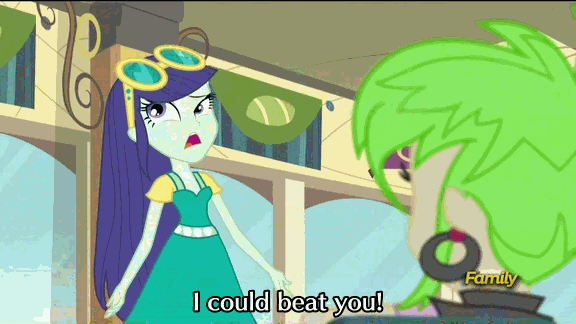
Nothing wrong with a little competition.*
So what is a competition in medical AI? Here are a few options:
getting teams to try to solve a clinical problem
getting teams to explore how problems might be solved and to try novel solutions
getting teams to build a model that performs the best on the competition test set
a waste of time
Now, I’m not so jaded that I jump to the last option (what is valuable to spend time on is a matter of opinion, and clinical utility is only one consideration. More on this at the end of the article).
But what about the first three options? Do these models work for the clinical task, and do they lead to broadly applicable solutions and novelty, or are they only good in the competition and not in the real world?
(Spoiler: I’m going to argue the latter).
Good models and bad models
Should we expect this competition to produce good models? Let’s see what one of the organisers says.
Cool. Totally agree. The lack of large, well-labeled datasets is the biggest major barrier to building useful clinical AI, so this dataset should help.
But saying that the dataset can be useful is not the same thing as saying the competition will produce good models.
So to define our terms, let’s say that a good model is a model that can detect brain haemorrhages on unseen data (cases that the model has no knowledge of).
So conversely, a bad model is one that doesn’t detect brain haemorrhages in unseen data.
These definitions will be non-controversial. Machine Learning 101. I’m sure the contest organisers agree with these definitions, and would prefer their participants to be producing good models rather than bad models. In fact, they have clearly set up the competition in a way designed to promote good models.
It just isn’t enough.
Epi vs ML, FIGHT!

If only academic arguments were this cute
ML101 (now personified) tells us that the way to control overfitting is to use a hold-out test set, which is data that has not been seen during model training. This simulates seeing new patients in a clinical setting.
ML101 also says that hold-out data is only good for one test. If you test multiple models, then even if you don’t cheat and leak test information into your development process, your best result is probably an outlier which was only better than your worst result by chance.
So competition organisers these days produce hold-out test sets, and only let each team run their model on the data once. Problem solved, says ML101. The winner only tested once, so there is no reason to think they are an outlier, they just have the best model.
Not so fast, buddy.
Let me introduce you to Epidemiology 101, who claims to have a magic coin.
Epi101 tells you to flip the coin 10 times. If you get 8 or more heads, that confirms the coin is magic (while the assertion is clearly nonsense, you play along since you know that 8/10 heads equates to a p-value of <0.05 for a fair coin, so it must be legit).
Unbeknownst to you, Epi101 does the same thing with 99 other people, all of whom think they are the only one testing the coin. What do you expect to happen?
If the coin is totally normal and not magic, around 5 people will find that the coin is special. Seems obvious, but think about this in the context of the individuals. Those 5 people all only ran a single test. According to them, they have statistically significant evidence they are holding a “magic” coin.
Now imagine you aren’t flipping coins. Imagine you are all running a model on a competition test set. Instead of wondering if your coin is magic, you instead are hoping that your model is the best one, about to earn you $25,000.
Of course, you can’t submit more than one model. That would be cheating. One of the models could perform well, the equivalent of getting 8 heads with a fair coin, just by chance.
Good thing there is a rule against it submitting multiple models, or any one of the other 99 participants and their 99 models could win, just by being lucky…
Multiple hypothesis testing
The effect we saw with Epi101’s coin applies to our competition, of course. Due to random chance, some percentage of models will outperform other ones, even if they are all just as good as each other. Maths doesn’t care if it was one team that tested 100 models, or 100 teams.
Even if certain models are better than others in a meaningful sense^, unless you truly believe that the winner is uniquely able to ML-wizard, you have to accept that at least some other participants would have achieved similar results, and thus the winner only won because they got lucky. The real “best performance” will be somewhere back in the pack, probably above average but below the winner^^.

Epi101 says this effect is called multiple hypothesis testing. In the case of a competition, you have a ton of hypotheses – that each participant was better than all others. For 100 participants, 100 hypotheses.
One of those hypotheses, taken in isolation, might show us there is a winner with statistical significance (p<0.05). But taken together, even if the winner has a calculated “winning” p-value of less than 0.05, that doesn’t mean we only have a 5% chance of making an unjustified decision. In fact, if this was coin flips (which is easier to calculate but not absurdly different), we would have a greater than 99% chance that one or more people would “win” and come up with 8 heads!
That is what an AI competition winner is; an individual who happens to get 8 heads while flipping fair coins.
Interestingly, while ML101 is very clear that running 100 models yourself and picking the best one will result in overfitting, they rarely discuss this “overfitting of the crowds”. Strange, when you consider that almost all ML research is done of heavily over-tested public datasets …
So how do we deal with multiple hypothesis testing? It all comes down to the cause of the problem, which is the data. Epi101 tells us that any test set is a biased version of the target population. In this case, the target population is “all patients with CT head imaging, with and without intracranial haemorrhage”. Let’s look at how this kind of bias might play out, with a toy example of a small hypothetical population:

In this population, we have a pretty reasonable “clinical” mix of cases. 3 intra-cerebral bleeds (likely related to high blood pressure or stroke), and two traumatic bleeds (a subdural on the right, and an extradural second from the left).
Now let’s sample this population to build our test set:

Randomly, we end up with mostly extra-axial (outside of the brain itself) bleeds. A model that performs well on this test will not necessarily work as well on real patients. In fact, you might expect a model that is really good at extra-axial bleeds at the expense of intra-cerebral bleeds to win.
But Epi101 doesn’t only point out problems. Epi101 has a solution.
So powerful
There is only one way to have an unbiased test set – if it includes the entire population! Then whatever model does well in the test will also be the best in practice, because you tested it on all possible future patients (which seems difficult).
This leads to a very simple idea – your test results become more reliable as the test set gets larger. We can actually predict how reliable test sets are using power calculations.

These are power curves. If you have a rough idea of how much better your “winning” model will be than the next best model, you can estimate how many test cases you need to reliably show that it is better.
So to find out if you model is 10% better than a competitor, you would need about 300 test cases. You can also see how exponentially the number of cases needed grows as the difference between models gets narrower.
Let’s put this into practice. If we look at another medical AI competition, the SIIM-ACR pneumothorax segmentation challenge, we see that the difference in Dice scores (ranging between 0 and 1) is negligible at the top of the leaderboard. Keep in mind that this competition had a dataset of 3200 cases (and that is being generous, they don’t all contribute to the Dice score equally).

So the difference between the top two was 0.0014 … let’s chuck that into a sample size calculator.

Ok, so to show a significant difference between these two results, you would need 920,000 cases.
But why stop there? We haven’t even discussed multiple hypothesis testing yet. This absurd number of cases needed is simply if there was ever only one hypothesis, meaning only two participants.
If we look at the leaderboard, there were 351 teams who made submissions. The rules say they could submit two models, so we might as well assume there were at least 500 tests. This has to produce some outliers, just like 500 people flipping a fair coin.
Epi101 to the rescue. Multiple hypothesis testing is really common in medicine, particularly in “big data” fields like genomics. We have spent the last few decades learning how to deal with this. The simplest reliable way to manage this problem is called the Bonferroni correction^^.
The Bonferroni correction is super simple: you divide the p-value by the number of tests to find a “statistical significance threshold” that has been adjusted for all those extra coin flips. So in this case, we do 0.05/500. Our new p-value target is 0.0001, any result worse than this will be considered to support the null hypothesis (that the competitors performed equally well on the test set). So let’s plug that in our power calculator.

Cool! It only increased a bit… to 2.6 million cases needed for a valid result :p
Now, you might say I am being very unfair here, and that there must be some small group of good models at the top of the leaderboard that are not clearly different from each other^^^. Fine, lets be generous. Surely no-one will complain if I compare the 1st place model to the 150th model?

So still more data than we had. In fact, I have to go down to the 192nd placeholder to find a result where the sample size was enough to produce a “statistically significant” difference.
But maybe this is specific to the pneumothorax challenge? What about other competitions?
In MURA, we have a test set of 207 x-rays, with 70 teams submitting “no more than two models per month”, so lets be generous and say 100 models were submitted. Running the numbers, the “first place” model is only significant versus the 56th placeholder and below.
In the RSNA Pneumonia Detection Challenge, there were 3000 test images with 350 teams submitting one model each. The first place was only significant compared to the 30th place and below.
And to really put the cat amongst the pigeons, what about outside of medicine?

As we go left to right in ImageNet results, the improvement year on year slows (the effect size decreases) and the number of people who have tested on the dataset increases. I can’t really estimate the numbers, but knowing what we know about multiple testing does anyone really believe the SOTA rush in the mid 2010s was anything but crowdsourced overfitting?
So what are competitions for?
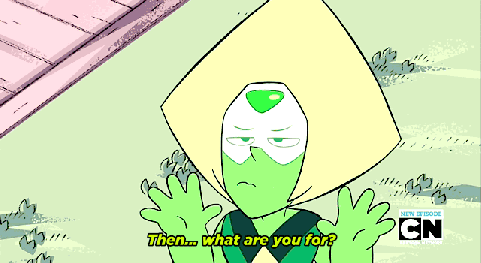
They obviously aren’t to reliably find the best model. They don’t even really reveal useful techniques to build great models, because we don’t know which of the hundred plus models actually used a good, reliable method, and which method just happened to fit the under-powered test set.
You talk to competition organisers … and they mostly say that competitions are for publicity. And that is enough, I guess.
AI competitions are fun, community building, talent scouting, brand promoting, and attention grabbing.
But AI competitions are not to develop useful models.
* I have a young daughter, don’t judge me for my encyclopaedic knowledge of My Little Pony.**
** not that there is anything wrong with My Little Pony***. Friendship is magic. There is just an unsavoury internet element that matches my demographic who is really into the show. I’m no brony.
*** barring the near complete white-washing of a children’s show about multi-coloured horses.
^ we can actually understand model performance with our coin analogy. Improving the model would be equivalent to bending the coin. If you are good at coin bending, doing this will make it more likely to land on heads, but unless it is 100% likely you still have no guarantee to “win”. If you have a 60%-chance-of-heads coin, and everyone else has a 50% coin, you objectively have the best coin, but your chance of getting 8 heads out of 10 flips is still only 17%. Better than the 5% the rest of the field have, but remember that there are 99 of them. They have a cumulative chance of over 99% that one of them will get 8 or more heads.
^^ people often say the Bonferroni correction is a bit conservative, but remember, we are coming in skeptical that these models are actually different from each other. We should be conservative.
^^^ do please note, the top model here got $30,000 and the second model got nothing. The competition organisers felt that the distinction was reasonable.
Luke Oakden-Rayner is a radiologist (medical specialist) in South Australia, undertaking a Ph.D in Medicine with the School of Public Health at the University of Adelaide. This post originally appeared on his blog here.
AI competitions don’t produce useful models published first on https://wittooth.tumblr.com/
0 notes
Text
AI competitions don’t produce useful models

By LUKE OAKDEN-RAYNER
A huge new CT brain dataset was released the other day, with the goal of training models to detect intracranial haemorrhage. So far, it looks pretty good, although I haven’t dug into it in detail yet (and the devil is often in the detail).
The dataset has been released for a competition, which obviously lead to the usual friendly rivalry on Twitter:
Of course, this lead to cynicism from the usual suspects as well.
And the conversation continued from there, with thoughts ranging from “but since there is a hold out test set, how can you overfit?” to “the proposed solutions are never intended to be applied directly” (the latter from a previous competition winner).
As the discussion progressed, I realised that while we “all know” that competition results are more than a bit dubious in a clinical sense, I’ve never really seen a compelling explanation for why this is so.
Hopefully that is what this post is, an explanation for why competitions are not really about building useful AI systems.
DISCLAIMER: I originally wrote this post expecting it to be read by my usual readers, who know my general positions on a range of issues. Instead, it was spread widely on Twitter and HackerNews, and it is pretty clear that I didn’t provide enough context for a number of statements made. I am going to write a follow-up to clarify several things, but as a quick response to several common criticisms:
I don’t think AlexNet is a better model than ResNet. That position would be ridiculous, particularly given all of my published work uses resnets and densenets, not AlexNets.
I think this miscommunication came from me not defining my terms: a “useful” model would be one that works for the task it was trained on. It isn’t a model architecture. If architectures are developed in the course of competitions that are broadly useful, then that is a good architecture, but the particular implementation submitted to the competition is not necessarily a useful model.
The stats in this post are wrong, but they are meant to be wrong in the right direction. They are intended for illustration of the concept of crowd-based overfitting, not accuracy. Better approaches would almost all require information that isn’t available in public leaderboards. I may update the stats at some point to make them more accurate, but they will never be perfect.
I was trying something new with this post – it was a response to a Twitter conversation, so I wanted to see if I could write it in one day to keep it contemporaneous. Given my usual process is spending several weeks and many rewrites per post, this was a risk. I think the post still serves its purpose, but I don’t personally think the risk paid off. If I had taken even another day or two, I suspect I would have picked up most of these issues before publication. Mea culpa.
Let’s have a battle
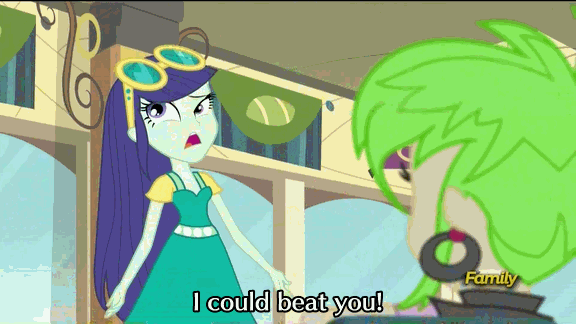
Nothing wrong with a little competition.*
So what is a competition in medical AI? Here are a few options:
getting teams to try to solve a clinical problem
getting teams to explore how problems might be solved and to try novel solutions
getting teams to build a model that performs the best on the competition test set
a waste of time
Now, I’m not so jaded that I jump to the last option (what is valuable to spend time on is a matter of opinion, and clinical utility is only one consideration. More on this at the end of the article).
But what about the first three options? Do these models work for the clinical task, and do they lead to broadly applicable solutions and novelty, or are they only good in the competition and not in the real world?
(Spoiler: I’m going to argue the latter).
Good models and bad models
Should we expect this competition to produce good models? Let’s see what one of the organisers says.
Cool. Totally agree. The lack of large, well-labeled datasets is the biggest major barrier to building useful clinical AI, so this dataset should help.
But saying that the dataset can be useful is not the same thing as saying the competition will produce good models.
So to define our terms, let’s say that a good model is a model that can detect brain haemorrhages on unseen data (cases that the model has no knowledge of).
So conversely, a bad model is one that doesn’t detect brain haemorrhages in unseen data.
These definitions will be non-controversial. Machine Learning 101. I’m sure the contest organisers agree with these definitions, and would prefer their participants to be producing good models rather than bad models. In fact, they have clearly set up the competition in a way designed to promote good models.
It just isn’t enough.
Epi vs ML, FIGHT!
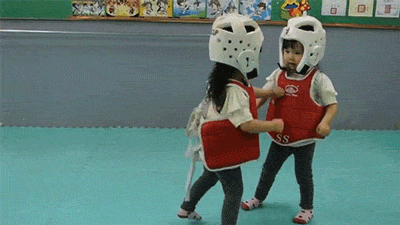
If only academic arguments were this cute
ML101 (now personified) tells us that the way to control overfitting is to use a hold-out test set, which is data that has not been seen during model training. This simulates seeing new patients in a clinical setting.
ML101 also says that hold-out data is only good for one test. If you test multiple models, then even if you don’t cheat and leak test information into your development process, your best result is probably an outlier which was only better than your worst result by chance.
So competition organisers these days produce hold-out test sets, and only let each team run their model on the data once. Problem solved, says ML101. The winner only tested once, so there is no reason to think they are an outlier, they just have the best model.
Not so fast, buddy.
Let me introduce you to Epidemiology 101, who claims to have a magic coin.
Epi101 tells you to flip the coin 10 times. If you get 8 or more heads, that confirms the coin is magic (while the assertion is clearly nonsense, you play along since you know that 8/10 heads equates to a p-value of <0.05 for a fair coin, so it must be legit).
Unbeknownst to you, Epi101 does the same thing with 99 other people, all of whom think they are the only one testing the coin. What do you expect to happen?
If the coin is totally normal and not magic, around 5 people will find that the coin is special. Seems obvious, but think about this in the context of the individuals. Those 5 people all only ran a single test. According to them, they have statistically significant evidence they are holding a “magic” coin.
Now imagine you aren’t flipping coins. Imagine you are all running a model on a competition test set. Instead of wondering if your coin is magic, you instead are hoping that your model is the best one, about to earn you $25,000.
Of course, you can’t submit more than one model. That would be cheating. One of the models could perform well, the equivalent of getting 8 heads with a fair coin, just by chance.
Good thing there is a rule against it submitting multiple models, or any one of the other 99 participants and their 99 models could win, just by being lucky…
Multiple hypothesis testing
The effect we saw with Epi101’s coin applies to our competition, of course. Due to random chance, some percentage of models will outperform other ones, even if they are all just as good as each other. Maths doesn’t care if it was one team that tested 100 models, or 100 teams.
Even if certain models are better than others in a meaningful sense^, unless you truly believe that the winner is uniquely able to ML-wizard, you have to accept that at least some other participants would have achieved similar results, and thus the winner only won because they got lucky. The real “best performance” will be somewhere back in the pack, probably above average but below the winner^^.
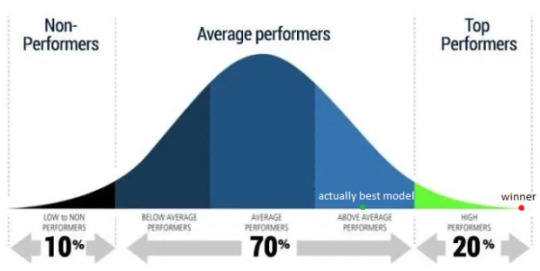
Epi101 says this effect is called multiple hypothesis testing. In the case of a competition, you have a ton of hypotheses – that each participant was better than all others. For 100 participants, 100 hypotheses.
One of those hypotheses, taken in isolation, might show us there is a winner with statistical significance (p<0.05). But taken together, even if the winner has a calculated “winning” p-value of less than 0.05, that doesn’t mean we only have a 5% chance of making an unjustified decision. In fact, if this was coin flips (which is easier to calculate but not absurdly different), we would have a greater than 99% chance that one or more people would “win” and come up with 8 heads!
That is what an AI competition winner is; an individual who happens to get 8 heads while flipping fair coins.
Interestingly, while ML101 is very clear that running 100 models yourself and picking the best one will result in overfitting, they rarely discuss this “overfitting of the crowds”. Strange, when you consider that almost all ML research is done of heavily over-tested public datasets …
So how do we deal with multiple hypothesis testing? It all comes down to the cause of the problem, which is the data. Epi101 tells us that any test set is a biased version of the target population. In this case, the target population is “all patients with CT head imaging, with and without intracranial haemorrhage”. Let’s look at how this kind of bias might play out, with a toy example of a small hypothetical population:

In this population, we have a pretty reasonable “clinical” mix of cases. 3 intra-cerebral bleeds (likely related to high blood pressure or stroke), and two traumatic bleeds (a subdural on the right, and an extradural second from the left).
Now let’s sample this population to build our test set:

Randomly, we end up with mostly extra-axial (outside of the brain itself) bleeds. A model that performs well on this test will not necessarily work as well on real patients. In fact, you might expect a model that is really good at extra-axial bleeds at the expense of intra-cerebral bleeds to win.
But Epi101 doesn’t only point out problems. Epi101 has a solution.
So powerful
There is only one way to have an unbiased test set – if it includes the entire population! Then whatever model does well in the test will also be the best in practice, because you tested it on all possible future patients (which seems difficult).
This leads to a very simple idea – your test results become more reliable as the test set gets larger. We can actually predict how reliable test sets are using power calculations.

These are power curves. If you have a rough idea of how much better your “winning” model will be than the next best model, you can estimate how many test cases you need to reliably show that it is better.
So to find out if you model is 10% better than a competitor, you would need about 300 test cases. You can also see how exponentially the number of cases needed grows as the difference between models gets narrower.
Let’s put this into practice. If we look at another medical AI competition, the SIIM-ACR pneumothorax segmentation challenge, we see that the difference in Dice scores (ranging between 0 and 1) is negligible at the top of the leaderboard. Keep in mind that this competition had a dataset of 3200 cases (and that is being generous, they don’t all contribute to the Dice score equally).
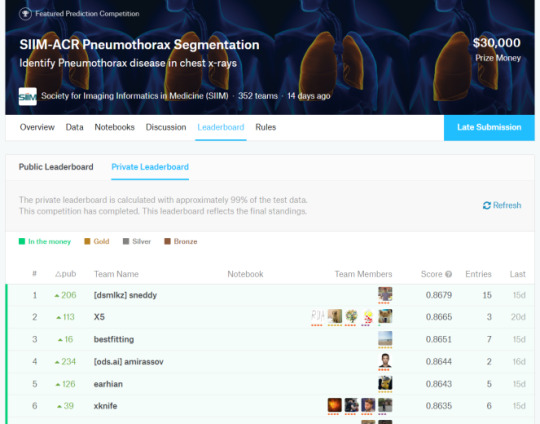
So the difference between the top two was 0.0014 … let’s chuck that into a sample size calculator.
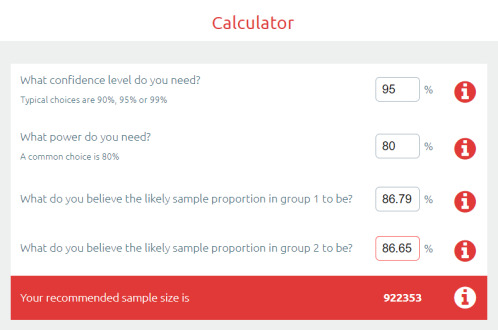
Ok, so to show a significant difference between these two results, you would need 920,000 cases.
But why stop there? We haven’t even discussed multiple hypothesis testing yet. This absurd number of cases needed is simply if there was ever only one hypothesis, meaning only two participants.
If we look at the leaderboard, there were 351 teams who made submissions. The rules say they could submit two models, so we might as well assume there were at least 500 tests. This has to produce some outliers, just like 500 people flipping a fair coin.
Epi101 to the rescue. Multiple hypothesis testing is really common in medicine, particularly in “big data” fields like genomics. We have spent the last few decades learning how to deal with this. The simplest reliable way to manage this problem is called the Bonferroni correction^^.
The Bonferroni correction is super simple: you divide the p-value by the number of tests to find a “statistical significance threshold” that has been adjusted for all those extra coin flips. So in this case, we do 0.05/500. Our new p-value target is 0.0001, any result worse than this will be considered to support the null hypothesis (that the competitors performed equally well on the test set). So let’s plug that in our power calculator.
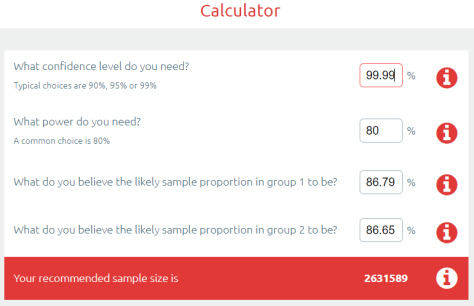
Cool! It only increased a bit… to 2.6 million cases needed for a valid result :p
Now, you might say I am being very unfair here, and that there must be some small group of good models at the top of the leaderboard that are not clearly different from each other^^^. Fine, lets be generous. Surely no-one will complain if I compare the 1st place model to the 150th model?

So still more data than we had. In fact, I have to go down to the 192nd placeholder to find a result where the sample size was enough to produce a “statistically significant” difference.
But maybe this is specific to the pneumothorax challenge? What about other competitions?
In MURA, we have a test set of 207 x-rays, with 70 teams submitting “no more than two models per month”, so lets be generous and say 100 models were submitted. Running the numbers, the “first place” model is only significant versus the 56th placeholder and below.
In the RSNA Pneumonia Detection Challenge, there were 3000 test images with 350 teams submitting one model each. The first place was only significant compared to the 30th place and below.
And to really put the cat amongst the pigeons, what about outside of medicine?

As we go left to right in ImageNet results, the improvement year on year slows (the effect size decreases) and the number of people who have tested on the dataset increases. I can’t really estimate the numbers, but knowing what we know about multiple testing does anyone really believe the SOTA rush in the mid 2010s was anything but crowdsourced overfitting?
So what are competitions for?

They obviously aren’t to reliably find the best model. They don’t even really reveal useful techniques to build great models, because we don’t know which of the hundred plus models actually used a good, reliable method, and which method just happened to fit the under-powered test set.
You talk to competition organisers … and they mostly say that competitions are for publicity. And that is enough, I guess.
AI competitions are fun, community building, talent scouting, brand promoting, and attention grabbing.
But AI competitions are not to develop useful models.
* I have a young daughter, don’t judge me for my encyclopaedic knowledge of My Little Pony.**
** not that there is anything wrong with My Little Pony***. Friendship is magic. There is just an unsavoury internet element that matches my demographic who is really into the show. I’m no brony.
*** barring the near complete white-washing of a children’s show about multi-coloured horses.
^ we can actually understand model performance with our coin analogy. Improving the model would be equivalent to bending the coin. If you are good at coin bending, doing this will make it more likely to land on heads, but unless it is 100% likely you still have no guarantee to “win”. If you have a 60%-chance-of-heads coin, and everyone else has a 50% coin, you objectively have the best coin, but your chance of getting 8 heads out of 10 flips is still only 17%. Better than the 5% the rest of the field have, but remember that there are 99 of them. They have a cumulative chance of over 99% that one of them will get 8 or more heads.
^^ people often say the Bonferroni correction is a bit conservative, but remember, we are coming in skeptical that these models are actually different from each other. We should be conservative.
^^^ do please note, the top model here got $30,000 and the second model got nothing. The competition organisers felt that the distinction was reasonable.
Luke Oakden-Rayner is a radiologist (medical specialist) in South Australia, undertaking a Ph.D in Medicine with the School of Public Health at the University of Adelaide. This post originally appeared on his blog here.
AI competitions don’t produce useful models published first on https://venabeahan.tumblr.com
0 notes
Note
So... at the trial were a few strange things that made the case of PD's murder even more dark and unknown... YD tehnically made both the defense and the offense to ,,shut up"... this is suspicious... but even more suspicious is that the head of the homeworld , White Diamond did not show up... so what if PD didn't agreed with the corruption on earth and by that thing WD and YD made up her assassination?
((Mod Jolleboi: don’t usually post answers like this, and might remove it later, but i wanna get back into the swing of things so here goes, my thoughts on the “YD dun did it”. Whatever the actual truth is, given all the things we’ve seen, it is certainly possible that YD either staged PD’s assassination, or at the very least used it to her advantage. The Perhaps earliest record of WD we have from the show is in season 1 episode 8: “serious Steven”, when Steven and co enter the pyramid “tomb”, were we both get to see the mural of Rose, and supposedly WD, as well as the sarcophagus with presumably WD’s image depicted on it and embedded with a gem of the same size and cut as that of the diamonds we’ve now seen. Was it WD? I dunno, could be, but question then remains, why there? and why is she not mentioned as “dead”. Well, for a long time, i had this here thought, the thought that YD, set the stage to be the sole diamond controlling everything.Yellow Diamond has been loudly spoken of as the most “rational and logical” of the diamonds by Peridot before her final turn to the crystal gems, however whilst she certainly seem to adopt a calm (and condescending) demeanor, we have seen that she is prone to temper tantrums and a desire to rush things and be done with it, rather than letting it run its course. She seem to also have a “leash” on BD, guised under her “desire” to comfort and “help” BD through her mourning of PD. BD infact seems to be so heartbroken by PD’s death that she is not at all in a proper state of being able to, well, rule with a calm and rational state of mind. With PD weighing so heavily on BD’s mind it is no wonder that YD is able to do what she wants, assuming ofc, that WD is not interfering.Ofc, we have never actually heard WD mentioned, we’ve only seen her existence illustrated in the background, and with that, along with history/context provided by the show, we can only theorize and speculate until the show chooses to reveal to us the truth.My speculative thought is thus: YD either assassinate or exploit the death of PD, and being the “rational” one, she stays back from the fighting, letting it escalate, whilst building her “super weapon” (we know peridot and the cluster were both her projects, and if she indeed has been in charge since the end of the war, then it is possible that the rapid advance in technology on homeworld was done under her rule, she just seems like the technology friendly sort of type). BD naturally enters the first stage of mourning, she gets angry, goes to earth personally and makes the conflict bigger. I believe that eventually, WD was brought into the conflict to end it, be it through force or diplomacy, i do not know, but regardless, she went, and that’s when YD fired her weapon, to get rid of WD. I believe that BD was not caught in the blast, but with the war over could go over to the next stages of mourning making her much easier to manipulate, and that WD was caught in the blast, and secretly entombed on earth, a planet believed to be defeated, and later planned to be destroyed. so why is PD’s death spoken so loudly of and WD not spoken of at all if she was actually entombed on earth? well, its simple, you can blame the death of one diamond on an assassin and a rebellion, but using your super weapon to eliminate a second, is simply to suspicious,l and even if you try to state it as a sacrifice, or an accident, people will not believe you, and/or they will be very upset, and much less keen to listen to you, effectively ruining your reputation that you so ill need to maintain. So what if you instead use the weapon, which btw forces everyone on the planet to retreat from battle, and if anyone is to be evacuated first it just has got to be the diamonds “right?”, and then you “silently” off your main political rival, a rival of such importance that no one dare seek them out if someone equally important states that she is “not to be disturbed”. Basically, you pretend like she is still alive, but that she is busy or working, basically staying out of the the public eye, with no one daring to question you on that. This puts YD in the top seat of homeworld governance. Two Diamonds have been offed, and one is in an easily manipulated state, you can basically say and do as you please. But then all of a sudden the past comes back to haunt you, the cluster project fails to remove the final bits of evidence, and the main perpetrator of the crime is caught and put on trial. YD’s calm is tested to its limit, and she rushes things, and sits judge obviously biased, in the one place she does not hold the same level of power, because its a courtroom, during a trial, and the person you’ve so far been manipulating is now adamant about proceeding and letting the trial running its course. Too many things are said, and at the mere mention of a diamond being the culprit finally makes her take action into her own hands before BD gets any further ideas.Now, whether or not PD agreed with what happened on earth, i cannot say. I think she was certainly very interested, curious and amazed by the marvels of earth,l but perhaps that she did so much like a child: not very carefully. She certainly liked humans enough to decide to preserve the human race and make a human zoo, but at the end of the day, she was still a diamond, there was no one with any real authority to tell her what to do, she was the one telling everyone else what to do with no one to tell her “no”. This can lead to her having made stupid decisions that gems such as Rose did not agree with, inciting the rebellion. We already know that before her death, the rebellion had started, at least as far as Rose is concerned, which means people already likely wanted her dead, but furthermore this also sends a message to those who are PD’s equal, the other diamonds, that PD might not be “as capable”. the human zoo alone is proof enough that PD had some rather different thoughts about other species than the other diamonds, and the fact a rebellion erupted under her rule might cause “rational and logical” thinkers such as, say, YD, to consider her a self-centered ruler with weird ideas that does not benefit the gem race in the slightest, and which quite clearly has only served to rile up and upset her own subjects to the point of civil war. Perhaps having other diamonds doing whatever they want is not the best idea. Maybe... just one ruler should hold the cards? a ruler that is rational, logical, and “only think of whats best for gemkind”. Maybe PD would be better off... “shattered”... foods for thought, whether true or not.TLDR; i think its plausible that YD set things up/exploited PD’s death to get rid of WD quietly under the guise she’s alive and well but far to busy with things too important for her to be disturbed, and cease power for herself whilst manipulating the only other diamond left who’s supposed to be her equal.Now, PD, there’s proof to suggest she cared enough about humans at least to preserve their species, but also that her rule upset gems like rose enough to start a rebellion, which can only serve to upset more gems, and also other diamonds who may view her as incapable of rule, setting the stage for her to be targeted by practically everyone and anyone.Ultimately, i do not know what PD was like, I do not know who truly killed her, and I do not know what truly happened to WD, whether she was in on it, whether she’s alive, whether she was also silently killed. All I know is that there’s evidence to suggest several things and speculate, and that the shows creators are awesome for making such an interesting world that allows us to speculate and theorize to such an enormous degree. Whatever the crewniverse has planned for the show, i’m sure it will still blow our minds X’Dhope that answers some of your questions into my thoughts on the matter.))
7 notes
·
View notes
Photo
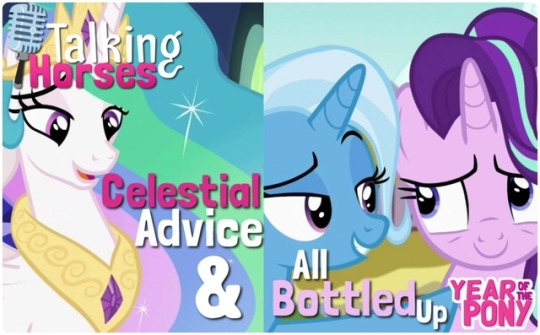
Woo Hoo! The Small, Emotional Horses are Back!!!
And they’ve come back not with a bang, but with a song, tears, and lot of hugs. To steal a joke from the Steven Universe fandom, this week’s episodes of Singing and Crying really deliver what they promise!
Oh, and this also happens to be the first time I’ve tried anything close to a reviewing format when talking about MLP. So that’s new!
Since we’re starting off a new season with this new series of posts, I figure I should warn you: I love this show. Way too much.
In addition to that, I’m not a very good critic. I respect those who are because they can bring to light new perspectives I hadn’t considered, but I think it just comes down to how I consume the media I love. I’m more emotionally driven than it seems a lot of the best critics are, who enjoy taking things apart as they watch them. I might do that in the aftermath to explain myself, but even if I can take it apart, I can’t deny that I had that (usually) enjoyable experience watching my favourite show and that’s ultimately a huge part of my take-away.
So, why get into the reviewing game if I’m not much of a reviewer?
Well, because the Brony fandom already has LOADS of wonderful critics who are already so great at providing awesome criticisms*, so that’s already covered. And, even if I’m not as critical of the show as I sometimes maybe should be, being a super fan means my analysis can still be in-depth. If very obviously biased towards the positive.
*To be clear, I’m of course not saying all critics only pick apart an episode by its flaws alone (they of course can praise elements as they do their deconstructions and give their recommendations), just that I tend to forgive a lot of flaws too easily so my bias is excessively clear
So, that’s just some context for you before we dive into it. I won’t really rate episodes because, I mean, the majority of the time it’s going to be somewhere on the scale of liked it to loved it (and in this case leaning towards loved it).
Instead, let’s just talk about the horses. Because I could ramble about this opener for hours!
Subverting the “Two-Parter” MLP Formula
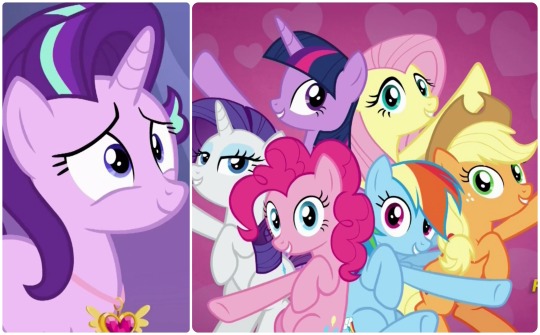
Right off the bat, I want to say how much I appreciate the staff’s inventiveness. Not for any mind-blowing story concept or even any awesomely emotional break-through, but because at this point they clearly know they can’t keep doing what they’ve always have been forever and ever.
Breaking up the premiere into two completely separate stories is a really simple idea, yes, but still one we’ve never seen before.
One episode is higher in concept than the other---dealing with the fate of one our main characters while the other breaks itself up between an A plot and a B plot (another thing MLP hasn’t really done too much of)---but overall I think this works really well because we haven’t really had a low-key season opener.
I mean, we’ve definitely had openers that are smaller in scope than others. Season 5′s opener, The Cutie Map, took place and exclusively effected one small village, for example. It still threatened to take the identities of our main characters away with a sinister antagonist and the conflict took two episodes to solve, but it wasn’t all Equestria at stake.
This is even smaller that that. More slice-of-life.
My theory’s been for a while that this is because of season’s 4 opener and finale. They went big on both occasions, but really big with the Tirek and Twilight battle. It seems to me that after they went full DragonBall Z, the staff realized that while it was cool to do once, they couldn’t keep escalating things forever. I mean, that battle had all the magic in Equestria---PLUS new, Rainbow-powered magic to finish it off! You really can’t go much bigger than that.
Which isn’t to say they always stuck to and will stick to stories with slower stakes. It’s just not always a show of who’s got the most powerful magic anymore.
And because of that, I really admire the ways they’ve tried to subvert our expectations recently.
Not every attempt worked---like, I think The Crystalling compartmentalized its story into an A plot and a B plot incorrectly; the emotional story was all with Starlight in the B plot, and the A plot was mostly just Big, Exciting Plot Stakes! without any one character to feel the stakes with (for instance, if Twilight had been worried about becoming an aunt, or we stuck with Shining Armour and Cadence worrying over how they’re going to protect Flurry Heart from herself and the world around her---we would’ve felt those stakes a lot more)---but even when it doesn’t pan out, I can still appreciate that they’re always pushing themselves to try something new!
We last left our heroes with a season finale that also subverted the formula, by having side characters band together instead of our mains. In my opinion, it ended up working fantastically, giving us some great character dynamics and a refreshing way to end the season.
This time, we come back to see the results of that in two stories with low, normal stakes, but satisfying emotional arcs nonetheless!
Episode 1 Celestial Advice A.K.A. STOP MAKING ME FEEL THINGS
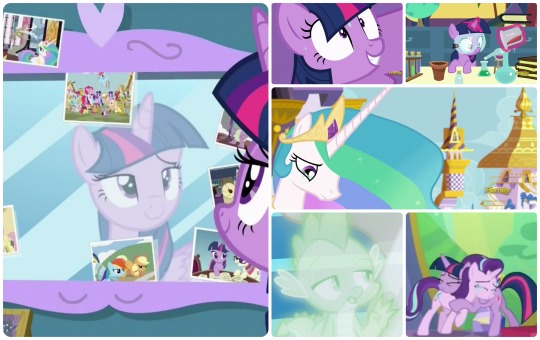
Even the first, while dealing with Starlight’s Ultimate Fate™ has a lot of its action take place within Twilight’s freakouts. The action itself is either funny or a bit emotional, but it’s not going to be incredibly exciting because there are no stakes to it, since it’s all a fantasy. But the Lady writers of this episode know that, and that’s not what we’re following throughout the episode.
The majority of the conflict is really simple---to the point that the first half of this episode is a bit slow in terms of pacing as Twilight starts to work herself up (with Discord’s “help”). Little jokes here and there help keep the leisurely pace from getting too dry (Spike’s sass, Katie Cook and Andy Price showing up at the celebration, gags with Discord, etc.) but it starts very modestly nonetheless.
Maybe too much so. As things escalate and we take the journey with Twilight, Spike, and Celestia, I started to get a little worried that while funny, this episode wouldn’t deliver much since all the fun fantasy gags, being the most memorable part so far, wouldn’t ultimately add anything in the long run.
That’s when it becomes a Celestia episode for a while and the emotional stakes go from meandering to oh-my-gosh-this-is-so-sweet.

Recontextualizing things from the past from Celestia’s point of view was so adorable, and without a doubt the best character development she’s gotten in the series so far.
Going back to watch the first three seasons and hearing Twilight write those letters is going to be extra sweet now (and Celestia even giving those up when Twilight graduates... dammit, that’s too cute).
Also, this is a bit out of order, but props to the moment when Twilight makes herself cry by imagining Starlight getting herself killed with a magic portal (and Celestia just losing her shit laughing shortly after). Twilight spends this whole episode worrying about Starlight and her future, but that’s the moment that really sells how much she loves her student (to the point that she’s begging her not to do it despite the fact that she’s the one imagining it).
That really pays off when you see how much Starlight doesn’t want to leave her either, despite graduating. Having the resolution of this episode being them crying and hugging is just... really great??? Thank you for this??? And Celestia smiling to Twilight being proud of her, too???? YES???
It’s also satisfying for at least one of the characters (and especially Starlight herself) to say that even if Starlight’s learned a few lessons and stepped up when she needed to, she really isn’t done learning.
And, honestly, Twilight’s line about her future being in her own hooves now makes this move rather fitting. You could say it’s just the writers admitting they don’t know where they want to take Starlight’s character, and maybe that’s true for now, but it’s also well-suited to Starlight for her to have to take responsibility for what comes next.
With the whole blaming cutie marks thing and then blaming Twilight for not letting her blame cutie marks thing, Starlight had to take responsibility for her past. Not necessarily by taking punishment for it, but by accepting that it was her fault and taking ownership of that.
Now that she’s started to progress in her friendship studies a bit, it’s up to her to define her future as well. That’s... pretty cool, in my books. I don’t know that she needed to stop learning friendship lessons from Twi, but to be fair, even Twilight hasn’t stopped learning about friendship, and she graduated in season 3!
So, with all the concerns in the fandom of Star being too perfect (read: too Mary Sue-like) and things coming too easily to her (more on that in episode 2 it seems), I’m glad we can still acknowledge her victories without giving her the world on a silver platter. To let her take responsibility for her life going forward, but not just claim she’s by any means done learning.
Because as the next episode proves, she’s still far from the master of friendship.
Episode 2 - All Bottled Up A.K.A. Stop Making Starlight Feel Things

Now we get to the StarTrix I mean totally not gay, platonic A plot contrasted by an adorable, easily resolved B plot to compliment it. The B plot couldn’t really stand on its own, but it makes a point of showing you that it knows it’s purely there to make the chaos and misery Trixie and Starlight look worse by always transitioning with some ironic restatement of the last line in a completely opposite tone.
A super simple thing, but it still got a chuckle out of me, especially the “Aw, nuts!” gag.
But I’m getting ahead, let’s go.... semi-chronologically.
We start with Trixie trying to learn actual magic, and that in and of itself is super neat.
In the comics, it’s canon that Trixie went to Celestia’s School for Gifted Unicorns at the same time as Twilight, so I wonder. If that’s canon with the show, is illusion/fake magic something you can learn at the school? If not, was she able to perform the spells the other gifted unicorns could, but focused more on her special talent to the neglect of her studies?
At any rate, it’s as early as this in the episode that we find the balance Trixie will be striking throughout the episode: between lovable, oblivious jerk and adorable, caring but misguided friend.
It’s a tricky thing to pull off, actually. Trixie spends the majority of the episode causing the conflict, not really realizing it, and showing off how self-centered she is. It would be easy for her to become annoying or just downright unlikable.
But even in her most flawed moments, she’s always entertaining, and it’s quickly followed by an adorable expression, funny bit of dialogue, or a genuine look of concern in the few moments that she catches on to what’s going with Starlight. With the ever excellent voice work from Kathleen Barr, Trixie pulls off the lovable jerk really well.
Like, one moment I loved especially on the rewatch was when Trixie tells Twilight Starlight has something for her. Like, she clearly thinks she was having Starlight’s back, making sure she didn’t forget to give her the snacks she wanted to that morning, and she’s so proud that she demonstrated what a good listener she is.
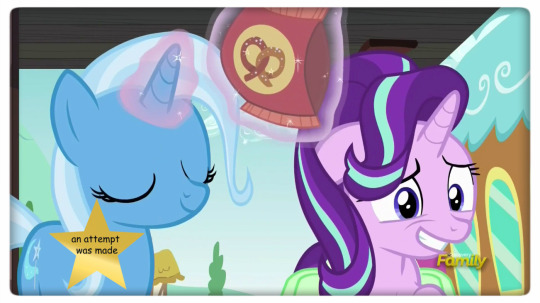
The fact that she’s trying to be a good friend even though she clearly doesn’t get it is just... really cute. She’s trying, she’s just really bad at it.
And speaking of things I loved on the rewatch, there are a lot of fun details you can actually track throughout the episode. Besides the ironic juxtaposition transitions, there’s little details, like when Starlight enters the kitchen, Spike’s cleaning all the new teacups that Trixie transfigured that morning.
And because of the whole ‘didn’t get to have any teacakes this morning’ joke, you can also see how snacky is. She eats the apple she was supposed to teleport when Starlight leaves, has the idea to get cinnamon nuts because of it, and later takes them back for more apples because they apparently go really well together.
Don’t do magic on an empty stomach, I guess.
And speaking of adorable, can I just gush about Starlight and Trixie some more? Because you know I’m going to anyway!
These two have an instant chemistry (whether we’re talking shipping or just plain ol’ vanilla flavoured friendship) that continues to work exceedingly well! You can really buy that these two would be friends in real life because they compliment each other that well. It’s one of the most natural feeling friendships in the whole show, in my personal opinion, even when one of them is simmering with barely concealed rage at the other.
Which brings us to Starlight. This episode yet again demonstrates why she’s a fun character to keep around. While some fans are opposed to having her be so (over) powerful, like I said in my Starlight/Dark Magic editorial, Starlight’s our gateway into some interesting, fun, and sometimes messed up magic.
Even in the early seasons, Twilight seemed mature enough to only really breakout the big guns in a full own Freakout (i.e. the Want it Need it spell). Starlight is not that mature. At least, not emotionally, which is apparently what her magic is tied to. So, even though you can tell she’s learning using magic to solve her problems isn’t really the way to go most of time, she also just know how to cope with big emotions otherwise yet.
In Every Little Thing She Does, Star’s panic and fear of failure lead her to finding the quickest solution. Here, she’s just trying not to deal with her anger at all.
This demonstrates that she’s still most definitely still growing, so props to the last episode again for keeping her around and imperfect to experience that growth.
But, speaking of dynamics and perfection, the mane six’s storyline is so pure. They all still have their quirks that in earlier seasons and more stressful situations would’ve gotten on each other’s nerves, but things just go smoothly because they’ve all come to expect those things from each other and clearly know how to accept each other for their flaws.
Which, of course, leads us to both a great punchline about sappy musical numbers (the meta humour in this two-parter is so wonderful, I loved all of it) and our first song of the season! It’s my understanding that we won’t be getting a huge amount of songs since Daniel Ingram was stretched so thin between the Movie, EQG specials, and season 7, but I’ll take quality over quantity if this is the sort of thing we’re getting.
The reused animation for the second chorus is a bit disappointing from such a creative team, but with how enjoyably sweet and catchy the song is, I’m kinda hoping for a longer version (or at least a fan version that’s extended). It won’t be one of the most iconic MLP songs ever, but it’s one I’d definitely listen to on repeat (and have been), so it’s a solid entry in my books.
Also: take a drink every time you hear mandolin in an MLP song. You’ll die, but what a way to go.
And with that, I think that about wraps it up for all the big stuff in this season premiere. On the whole, these episodes present a strong, yet humble start to the season. A slower start than usual, but one that’s filled with some really heartwarming and funny moments showing off both how far we’ve come with these characters, and that we can still find new avenues to explore with them.
And based on the spoilers that have been released for the rest of the season, and the comics that have boast a tie-in at some point with the season or its themes, I’m more than excited to see where we go from here.
The year of the pony, indeed.
Want some more MLP content while waiting for the next episode? Got you covered right over here, with some editorials! And why not have the last three things I did, free of charge:

Starlight Editorial, Supporting Cast, and Legends of Magic Comic Review
Or, browse it all! See everything I’ve done this year so far:
Year of the Pony
Special Thanks to Millennial Dan on Deviantart, who made the Microphone vector for the logo!
And, We’re Off!
#year of the pony#yearofthepony#celestial advice#all bottled up#mlp all bottled up#mlp#mlp reviews#mlp analysis#My Little Pony#friendship is magic#My Little Pony: Friendship is Magic#starlight glimmer#twilight sparkle#princess celestia#trixie lulamoon#the great and powerful trixie#rainbow dash#pinkie pie#fluttershy#applejack#rarity#discord#thorax#mlp episode reviews
19 notes
·
View notes